Frank F. Weber's Blog, page 13
October 1, 2019
Halloween Release of Killer
Last Call presentations and delivery begin this week!  Upcoming Events:
Upcoming Events:
October 5, 2109. Last Call book opening at the Shoppes of Little Falls! The 3rd book in the Jon Frederick series will be released. Frank will be signing books from 11:00 to 2:00, and will speak on his work and his newest book from 12:00 noon to 1:00. The event will feature chicken wings and homemade pretzels with dips from award winning chef Scotty Stocco. Starry Eyed Brewery beverages will be served along with lemonade, soda and water. There may even be a special visit from the book cover model, dressed as she is on the cover.October 8, 2019, KDWA radio interview with Maureen McNeary at 3:30 p.m. KDWA is a tri-county source for news out of Hastings, Minnesota.October 10, 2019. Frank will be providing an all-day training to licensed law enforcement officers on Addressing Mental Illness Effectively from 8:00-4:30 p.m. at Central Lakes College sponsored by the Criminal Justice program at CLC.October 12, 2019 Signing books at the Twin Cities Book Festival at the Minnesota Fairgrounds from 10:00 am to 5:00 pm.October 17, 2019 Presenting at the Law Enforcement and Mental Health: Expanding Possibilities for a Biopsychosocial Inclusion . The Conference is hosted by the Departments of Social Work, Criminal Justice and the Center for Continuing Studies of Saint Cloud State University, at the Kelly Inn - 100 4th Avenue South, Saint Cloud MN, 56301. To register for the conference: https://www.stcloudstate.edu/conferences/criminal-justice-social-services/default.aspx and click on “Registration”. The available Conference Registration information is found there.October 17, 2019 Speaking on my latest thriller, Last Call at the Bierstube in Hastings at 6:30 p.m. The Bierstube is located at 109 11th Street West, Hastings, Minnesota.The Roundhouse Brewery is hosting my big Brainerd opening of Last Call on Saturday, October 19, 2019 from 4:00 to 6:00 pm. I’ll speak at 5:00 about writing True Crime mysteries and you can get questions answered about forensic psychology. The Roundhouse Brewery is located at 1551 Northern Pacific Rd, Brainerd, Minnesota. It is located at the old trainyard in downtown Brainerd. This will be a great time and with a title like Last Call, it only seems fitting. Stop in and have a cold beverage. Book cover model, Elise Yates, will be dressed as she is on the cover and will be available for pictures with attendees.The Beaver Island Brewing Company is hosting my big St. Cloud opening of Last Call on Monday, October 21, 2019. I’ll speak from 6:00 to 7:00 about writing True Crime mysteries and you can get questions answered about forensic psychology. Beaver Island Brewing Company is located at 216, 6th Avenue South, St. Cloud. It is right off of division close to the exits to St. Cloud State. This is going to be a blast and there is no cost. Stop in and have a cold beverage. With a cover of Last Call by bar, and the back of the book featuring a young woman by the river, Beaver Island is the perfect location! (The Beaver Islands are the islands in the Mississippi river through St. Cloud.)Saturday, October 26, 2019. Signing books at Barnes and Noble in St. Cloud, from 12:00 to 2:00 p.m. Barnes and Noble is located at 3940 Division Street, St Cloud, Minnesota, 56301October 28, 2019, at 4:00 p.m. presenting on the newest thriller, Last Call at Northern Lakes Senior Living center in Baxter. Frank will be speaking from 4:00 to 5:00 and will be signing books after. This is a free event and Northern Lakes is located at 8186 Excelsior Road, Baxter, Minnesota.November 1, 2019, speaking on the writing of true crime novels and the latest thriller, Last Call at the King Library and San Jose State University Library from 12:00 to 1:30 at 150 East San Fernando Street, San Jose, California. Forensic Analysis:
Halloween release of killer, and a late night phone call frees the obvious suspect.
“Predators come out at night. There aren’t as many eyes on you. People feel safe in their homes, and they’re oblivious to what goes on outside.” Detective Michael Casey, Investigator in the Patricia Miller homicide.
1988 Melbourne, Florida
Patricia Miller, a nurse at Florida Keys married police officer, Josh McKenna. They separated after a couple months. Patsy described Josh as emotionally abusive. Patsy moved to Green Gables condominium in Melbourne. When Patsy is found brutally murdered, her close friends state Josh is the obvious suspect.
April 20, 1988. Patsy’s divorce papers were delivered to her in late afternoon. A friend was supposed to stay over, but she wasn’t able to. Melbourne fire department responds to a call, and find a women in bed. Her hands were tied together with shoe laces. She was the victim of a blow with a heavy object to the head, strangled and sexually assaulted.
The killer had been careful to avoid leaving DNA or any evidence. Investigators take their time in preparing for confrontation with Josh McKenna since he is a police officer. Josh McKenna tells police Patsy told him marrying him was the biggest mistake of her life. Josh is interrogated for hours, and finally recalls making a phone call to a friend at 3:00 in the morning at the time of Patsy’s murder. This is an interesting twist, as we often hear of cell phones putting killers at the scene of the crime. It’s important to note that more often, cell phones confirm alibis. Police check it out, and his alibi stands.
Great detective work: Police canvas the area around Patsy Miller’s home for the next few nights, to see who’s walking through neighborhood. James Barnes is stopped and photo’d then sent on his way. Police are familiar with Barnes, as he has a history of theft and dealing stolen goods. As police interview neighbors, a woman tells them she saw a man looking in her window two nights before Patsy’s murder. She refused to answer the door, but found a bottle of champagne sitting by the door after he left. She wasn’t close to the man, but she knew it was James Barnes. Police bring in Barnes, and he seems to enjoy talking to the investigators, which is unusual, but they have nothing to hold him on. The case goes cold.
In 1997, Linda Bursey failed to come to work. Linda was a medical assistant at Melbourne Internal Medicine Associates. Her coworkers were concerned about her absence as she had a restraining order against her husband, James Bursey. James had been charged with domestic assault against her twice, and he had been recently released, on Halloween. Police can’t break into the home, as they do not have cause. However, they keep an eye on the home, and the next evening, they notice the garage door is open. They call the home and James Bursey answers and first tells them Linda is sleeping. When they press to speak to her, he claims Linda has left and is visiting friends. Police call a tactile team, as they know James can’t legally be in her home. They pretend to leave the scene, and when James steps into the garage they grab him. An officer at the scene stated, "It took quite a bit to subdue him. He fought tooth and nail until they used pepper spray on him."
Police check the home and find blood in rooms throughout the house. A brutal fight had taken place. The washing machine was running, and suitcases were set out. Police find Linda Bursey dead in her closet, beaten and strangled. One of the investigators who steps in to interrogate the suspect recognizes James Bursey is James Barnes. James Barnes pleads guilty to murdering his wife, Linda.
In 2001, they resubmit the DNA from Patsy Miller case, as technology has improved. James Barnes DNA matches the full profile of the man who raped Patsy Miller. Barnes is serving a life sentence for the 1997 first-degree murder conviction of his wife, Linda, so investigators patiently wait for the opportunity to prosecute him.
For years, James Barnes refuses to answer questions. Finally, in 2005, he agrees to a taped interview with another inmate. Barnes admits he had been stalking Patsy Miller. On the evening of her murder, he broke into the home and hid as she got ready for the evening. James stated that he had pursued Patsy at the community pool, and she humiliated him when she rejected him. At that point, he decided to take her life.
James Barnes broke into Miller's condominium and removed all his clothes so that he could minimize any forensic evidence that he might leave. After watching her for a while, he forced her, at knifepoint, to have sex. He tied her up with his shoelaces, sexually battered her again, tried to strangle her with a terrycloth belt from her robe, but she was strong and he couldn’t handle her. He finally bludgeoned her to death with a hammer. Barnes collected his clothes and cleaned anything he touched in the condo before setting fire to the bed. He never expressed remorse for killing her.
James doesn’t feel it’s fair that his confession to Patricia’s murder landed him on death row. “Fair” doesn’t seem like a term he should be using. James has a twin sister, Jeannice Barnes, who has reported that James suffered significant physical and sexual abuse in their home growing up. She indicated she wouldn’t be attending his execution, as there is a warrant for her arrest.
When putting together Last Call we considered a variety of cover possibilities. Even when the idea was established, a variety of photos were considered. Here are some of the finalists: Final Cover
Final Cover 




 I am also putting together a playlist of the book opening, and am open to suggestions. I realize that it might be difficult, not having the book, so offer suggestions you could hear at “last call.” I have to include Stumblin In, and Chevy Van, as they are humorously referenced in the book.
I am also putting together a playlist of the book opening, and am open to suggestions. I realize that it might be difficult, not having the book, so offer suggestions you could hear at “last call.” I have to include Stumblin In, and Chevy Van, as they are humorously referenced in the book.
Thanks for listening,
Frank
 Upcoming Events:
Upcoming Events:October 5, 2109. Last Call book opening at the Shoppes of Little Falls! The 3rd book in the Jon Frederick series will be released. Frank will be signing books from 11:00 to 2:00, and will speak on his work and his newest book from 12:00 noon to 1:00. The event will feature chicken wings and homemade pretzels with dips from award winning chef Scotty Stocco. Starry Eyed Brewery beverages will be served along with lemonade, soda and water. There may even be a special visit from the book cover model, dressed as she is on the cover.October 8, 2019, KDWA radio interview with Maureen McNeary at 3:30 p.m. KDWA is a tri-county source for news out of Hastings, Minnesota.October 10, 2019. Frank will be providing an all-day training to licensed law enforcement officers on Addressing Mental Illness Effectively from 8:00-4:30 p.m. at Central Lakes College sponsored by the Criminal Justice program at CLC.October 12, 2019 Signing books at the Twin Cities Book Festival at the Minnesota Fairgrounds from 10:00 am to 5:00 pm.October 17, 2019 Presenting at the Law Enforcement and Mental Health: Expanding Possibilities for a Biopsychosocial Inclusion . The Conference is hosted by the Departments of Social Work, Criminal Justice and the Center for Continuing Studies of Saint Cloud State University, at the Kelly Inn - 100 4th Avenue South, Saint Cloud MN, 56301. To register for the conference: https://www.stcloudstate.edu/conferences/criminal-justice-social-services/default.aspx and click on “Registration”. The available Conference Registration information is found there.October 17, 2019 Speaking on my latest thriller, Last Call at the Bierstube in Hastings at 6:30 p.m. The Bierstube is located at 109 11th Street West, Hastings, Minnesota.The Roundhouse Brewery is hosting my big Brainerd opening of Last Call on Saturday, October 19, 2019 from 4:00 to 6:00 pm. I’ll speak at 5:00 about writing True Crime mysteries and you can get questions answered about forensic psychology. The Roundhouse Brewery is located at 1551 Northern Pacific Rd, Brainerd, Minnesota. It is located at the old trainyard in downtown Brainerd. This will be a great time and with a title like Last Call, it only seems fitting. Stop in and have a cold beverage. Book cover model, Elise Yates, will be dressed as she is on the cover and will be available for pictures with attendees.The Beaver Island Brewing Company is hosting my big St. Cloud opening of Last Call on Monday, October 21, 2019. I’ll speak from 6:00 to 7:00 about writing True Crime mysteries and you can get questions answered about forensic psychology. Beaver Island Brewing Company is located at 216, 6th Avenue South, St. Cloud. It is right off of division close to the exits to St. Cloud State. This is going to be a blast and there is no cost. Stop in and have a cold beverage. With a cover of Last Call by bar, and the back of the book featuring a young woman by the river, Beaver Island is the perfect location! (The Beaver Islands are the islands in the Mississippi river through St. Cloud.)Saturday, October 26, 2019. Signing books at Barnes and Noble in St. Cloud, from 12:00 to 2:00 p.m. Barnes and Noble is located at 3940 Division Street, St Cloud, Minnesota, 56301October 28, 2019, at 4:00 p.m. presenting on the newest thriller, Last Call at Northern Lakes Senior Living center in Baxter. Frank will be speaking from 4:00 to 5:00 and will be signing books after. This is a free event and Northern Lakes is located at 8186 Excelsior Road, Baxter, Minnesota.November 1, 2019, speaking on the writing of true crime novels and the latest thriller, Last Call at the King Library and San Jose State University Library from 12:00 to 1:30 at 150 East San Fernando Street, San Jose, California. Forensic Analysis:
Halloween release of killer, and a late night phone call frees the obvious suspect.
“Predators come out at night. There aren’t as many eyes on you. People feel safe in their homes, and they’re oblivious to what goes on outside.” Detective Michael Casey, Investigator in the Patricia Miller homicide.
1988 Melbourne, Florida
Patricia Miller, a nurse at Florida Keys married police officer, Josh McKenna. They separated after a couple months. Patsy described Josh as emotionally abusive. Patsy moved to Green Gables condominium in Melbourne. When Patsy is found brutally murdered, her close friends state Josh is the obvious suspect.
April 20, 1988. Patsy’s divorce papers were delivered to her in late afternoon. A friend was supposed to stay over, but she wasn’t able to. Melbourne fire department responds to a call, and find a women in bed. Her hands were tied together with shoe laces. She was the victim of a blow with a heavy object to the head, strangled and sexually assaulted.
The killer had been careful to avoid leaving DNA or any evidence. Investigators take their time in preparing for confrontation with Josh McKenna since he is a police officer. Josh McKenna tells police Patsy told him marrying him was the biggest mistake of her life. Josh is interrogated for hours, and finally recalls making a phone call to a friend at 3:00 in the morning at the time of Patsy’s murder. This is an interesting twist, as we often hear of cell phones putting killers at the scene of the crime. It’s important to note that more often, cell phones confirm alibis. Police check it out, and his alibi stands.
Great detective work: Police canvas the area around Patsy Miller’s home for the next few nights, to see who’s walking through neighborhood. James Barnes is stopped and photo’d then sent on his way. Police are familiar with Barnes, as he has a history of theft and dealing stolen goods. As police interview neighbors, a woman tells them she saw a man looking in her window two nights before Patsy’s murder. She refused to answer the door, but found a bottle of champagne sitting by the door after he left. She wasn’t close to the man, but she knew it was James Barnes. Police bring in Barnes, and he seems to enjoy talking to the investigators, which is unusual, but they have nothing to hold him on. The case goes cold.
In 1997, Linda Bursey failed to come to work. Linda was a medical assistant at Melbourne Internal Medicine Associates. Her coworkers were concerned about her absence as she had a restraining order against her husband, James Bursey. James had been charged with domestic assault against her twice, and he had been recently released, on Halloween. Police can’t break into the home, as they do not have cause. However, they keep an eye on the home, and the next evening, they notice the garage door is open. They call the home and James Bursey answers and first tells them Linda is sleeping. When they press to speak to her, he claims Linda has left and is visiting friends. Police call a tactile team, as they know James can’t legally be in her home. They pretend to leave the scene, and when James steps into the garage they grab him. An officer at the scene stated, "It took quite a bit to subdue him. He fought tooth and nail until they used pepper spray on him."
Police check the home and find blood in rooms throughout the house. A brutal fight had taken place. The washing machine was running, and suitcases were set out. Police find Linda Bursey dead in her closet, beaten and strangled. One of the investigators who steps in to interrogate the suspect recognizes James Bursey is James Barnes. James Barnes pleads guilty to murdering his wife, Linda.
In 2001, they resubmit the DNA from Patsy Miller case, as technology has improved. James Barnes DNA matches the full profile of the man who raped Patsy Miller. Barnes is serving a life sentence for the 1997 first-degree murder conviction of his wife, Linda, so investigators patiently wait for the opportunity to prosecute him.
For years, James Barnes refuses to answer questions. Finally, in 2005, he agrees to a taped interview with another inmate. Barnes admits he had been stalking Patsy Miller. On the evening of her murder, he broke into the home and hid as she got ready for the evening. James stated that he had pursued Patsy at the community pool, and she humiliated him when she rejected him. At that point, he decided to take her life.
James Barnes broke into Miller's condominium and removed all his clothes so that he could minimize any forensic evidence that he might leave. After watching her for a while, he forced her, at knifepoint, to have sex. He tied her up with his shoelaces, sexually battered her again, tried to strangle her with a terrycloth belt from her robe, but she was strong and he couldn’t handle her. He finally bludgeoned her to death with a hammer. Barnes collected his clothes and cleaned anything he touched in the condo before setting fire to the bed. He never expressed remorse for killing her.
James doesn’t feel it’s fair that his confession to Patricia’s murder landed him on death row. “Fair” doesn’t seem like a term he should be using. James has a twin sister, Jeannice Barnes, who has reported that James suffered significant physical and sexual abuse in their home growing up. She indicated she wouldn’t be attending his execution, as there is a warrant for her arrest.
When putting together Last Call we considered a variety of cover possibilities. Even when the idea was established, a variety of photos were considered. Here are some of the finalists:
 Final Cover
Final Cover 




 I am also putting together a playlist of the book opening, and am open to suggestions. I realize that it might be difficult, not having the book, so offer suggestions you could hear at “last call.” I have to include Stumblin In, and Chevy Van, as they are humorously referenced in the book.
I am also putting together a playlist of the book opening, and am open to suggestions. I realize that it might be difficult, not having the book, so offer suggestions you could hear at “last call.” I have to include Stumblin In, and Chevy Van, as they are humorously referenced in the book. Thanks for listening,
Frank
Published on October 01, 2019 18:00
The Burning Bed Case
Last Call presentations and delivery begin this week!  Upcoming Events:
Upcoming Events:
October 5, 2109. Last Call book opening at the Shoppes of Little Falls! The 3rd book in the Jon Frederick series will be released. Frank will be signing books from 11:00 to 2:00, and will speak on his work and his newest book from 12:00 noon to 1:00. The event will feature chicken wings and homemade pretzels with dips from award winning chef Scotty Stocco. Starry Eyed Brewery beverages will be served along with lemonade, soda and water. There may even be a special visit from the book cover model, dressed as she is on the cover.October 8, 2019, KDWA radio interview with Maureen McNeary at 3:30 p.m. KDWA is a tri-county source for news out of Hastings, Minnesota.October 10, 2019. Frank will be providing an all-day training to licensed law enforcement officers on Addressing Mental Illness Effectively from 8:00-4:30 p.m. at Central Lakes College sponsored by the Criminal Justice program at CLC.October 12, 2019 Signing books at the Twin Cities Book Festival at the Minnesota Fairgrounds from 10:00 am to 5:00 pm.October 17, 2019 Presenting at the Law Enforcement and Mental Health: Expanding Possibilities for a Biopsychosocial Inclusion . The Conference is hosted by the Departments of Social Work, Criminal Justice and the Center for Continuing Studies of Saint Cloud State University, at the Kelly Inn - 100 4th Avenue South, Saint Cloud MN, 56301. To register for the conference: https://www.stcloudstate.edu/conferences/criminal-justice-social-services/default.aspx and click on “Registration”. The available Conference Registration information is found there.October 17, 2019 Speaking on my latest thriller, Last Call at the Bierstube in Hastings at 6:30 p.m. The Bierstube is located at 109 11th Street West, Hastings, Minnesota.The Roundhouse Brewery is hosting my big Brainerd opening of Last Call on Saturday, October 19, 2019 from 4:00 to 6:00 pm. I’ll speak at 5:00 about writing True Crime mysteries and you can get questions answered about forensic psychology. The Roundhouse Brewery is located at 1551 Northern Pacific Rd, Brainerd, Minnesota. It is located at the old trainyard in downtown Brainerd. This will be a great time and with a title like Last Call, it only seems fitting. Stop in and have a cold beverage. Book cover model, Elise Yates, will be dressed as she is on the cover and will be available for pictures with attendees.The Beaver Island Brewing Company is hosting my big St. Cloud opening of Last Call on Monday, October 21, 2019. I’ll speak from 6:00 to 7:00 about writing True Crime mysteries and you can get questions answered about forensic psychology. Beaver Island Brewing Company is located at 216, 6th Avenue South, St. Cloud. It is right off of division close to the exits to St. Cloud State. This is going to be a blast and there is no cost. Stop in and have a cold beverage. With a cover of Last Call by bar, and the back of the book featuring a young woman by the river, Beaver Island is the perfect location! (The Beaver Islands are the islands in the Mississippi river through St. Cloud.)Saturday, October 26, 2019. Signing books at Barnes and Noble in St. Cloud, from 12:00 to 2:00 p.m. Barnes and Noble is located at 3940 Division Street, St Cloud, Minnesota, 56301October 28, 2019, at 4:00 p.m. presenting on the newest thriller, Last Call at Northern Lakes Senior Living center in Baxter. Frank will be speaking from 4:00 to 5:00 and will be signing books after. This is a free event and Northern Lakes is located at 8186 Excelsior Road, Baxter, Minnesota.November 1, 2019, speaking on the writing of true crime novels and the latest thriller, Last Call at the King Library and San Jose State University Library from 12:00 to 1:30 at 150 East San Fernando Street, San Jose, California. Forensic Analysis:
Halloween release of killer, and a late night phone call frees the obvious suspect.
“Predators come out at night. There aren’t as many eyes on you. People feel safe in their homes, and they’re oblivious to what goes on outside.” Detective Michael Casey, Investigator in the Patricia Miller homicide.
1988 Melbourne, Florida
Patricia Miller, a nurse at Florida Keys marries police officer, Josh McKenna. They separate after a couple months. Patsy described Josh as emotionally abusive. Patsy moved to Green Gables condominium in Melbourne. Patsy’s close friends state Josh is the obvious suspect.
April 20, 1988. Patsy’s divorce papers were delivered to her in late afternoon. A friend was supposed to stay over, but she wasn’t able to. Melbourne fire department responds to a call, and find a women in bed. Her hands were tied together with shoe laces. She was the victim of a blow with a heavy object to the head, strangled and sexually assaulted.
The killer had been careful to avoid leaving DNA or any evidence. Investigators take their time in preparing for confrontation with Josh McKenna since he is a police officer. Josh McKenna tells police Patsy told him marrying him was the biggest mistake of her life. Josh is interrogated for hours, and finally recalls making a phone call to a friend at 3:00 in the morning at the time of Patsy’s murder. This is an interesting twist, as we often hear of cell phones putting killers at the scene of the crime. It’s important to note that more often, cell phones confirm alibis. Police check it out, and his alibi stands.
Great detective work: Police canvas the area around Patsy Miller’s home for the next few nights, to see who’s walking through neighborhood. James Barnes is stopped and photo’d then sent on his way. Police are familiar with Barnes, as he has a history of theft and dealing stolen goods. As police interview neighbors, a woman tells them she saw a man looking in her window two nights before Patsy’s murder. She refused to answer the door, but found a bottle of champagne sitting by the door after he left. She wasn’t close to the man, but she knew it was James Barnes. Police bring in Barnes, and he seems to enjoy talking to the investigators, which is unusual, but they have nothing to hold him on. The case goes cold.
In 1997, Linda Bursey failed to come to work. Linda was a medical assistant at Melbourne Internal Medicine Associates. Her coworkers were concerned about her absence as she had a restraining order against her husband, James Bursey. James had been charged with domestic assault against her twice, and he had been recently released, on Halloween. Police can’t break into the home, as they do not have cause. However, they keep an eye on the home, and the next evening, they notice the garage door is open. They call the home and James Bursey answers and first tells them Linda is sleeping. When they press to speak to her, he claims Linda has left and is visiting friends. Police call a tactile team, as they know James can’t legally be in her home. They pretend to leave the scene, and when James steps into the garage they grab him. An officer at the scene stated, "It took quite a bit to subdue him. He fought tooth and nail until they used pepper spray on him."
Police check the home and find blood in rooms throughout the house. A brutal fight had taken place. The washing machine was running, and suitcases were set out. Police find Linda Bursey dead in her closet, beaten and strangled. One of the investigators who steps in to interrogate the suspect recognizes James Bursey is James Barnes. James Barnes pleads guilty to murdering his wife, Linda.
In 2001, they resubmit the DNA from Patsy Miller case, as technology has improved. James Barnes DNA matches the full profile of the man who raped Patsy Miller. Barnes is serving a life sentence for the 1997 first-degree murder conviction of his wife, Linda, so investigators patiently wait for the opportunity to prosecute him.
For years, James Barnes refuses to answer questions. Finally, in 2005, he agrees to a taped interview with another inmate. Barnes admits he had been stalking Patsy Miller. On the evening of her murder, he broke into the home and hid as she got ready for the evening. James stated that he had pursued Patsy at the community pool, and she humiliated him when she rejected him. At that point, he decided to take her life.
James Barnes broke into Miller's condominium and removed all his clothes so that he could minimize any forensic evidence that he might leave. After watching her for a while, he forced her, at knifepoint, to have sex. He tied her up with his shoelaces, sexually battered her again, tried to strangle her with a terrycloth belt from her robe, but she was strong and he couldn’t handle her. He finally bludgeoned her to death with a hammer. Barnes collected his clothes and cleaned anything he touched in the condo before setting fire to the bed. He never expressed remorse for killing her.
James doesn’t feel it’s fair that his confession to Patricia’s murder landed him on death row. “Fair” doesn’t seem like a term he should be using. James has a twin sister, Jeannice Barnes, who has reported that James suffered significant physical and sexual abuse in their home growing up. She indicated she wouldn’t be attending his execution, as there is a warrant for her arrest.
When putting together Last Call we considered a variety of cover possibilities. Even when the idea was established, a variety of photos were considered. Here are some of the finalists: Final Cover
Final Cover 




 I am also putting together a playlist of the book opening, and am open to suggestions. I realize that it might be difficult, not having the book, so offer suggestions you could hear at “last call.” I have to include Stumblin In, and Chevy Van, as they are humorously referenced in the book.
I am also putting together a playlist of the book opening, and am open to suggestions. I realize that it might be difficult, not having the book, so offer suggestions you could hear at “last call.” I have to include Stumblin In, and Chevy Van, as they are humorously referenced in the book.
Thanks for listening,
Frank
 Upcoming Events:
Upcoming Events:October 5, 2109. Last Call book opening at the Shoppes of Little Falls! The 3rd book in the Jon Frederick series will be released. Frank will be signing books from 11:00 to 2:00, and will speak on his work and his newest book from 12:00 noon to 1:00. The event will feature chicken wings and homemade pretzels with dips from award winning chef Scotty Stocco. Starry Eyed Brewery beverages will be served along with lemonade, soda and water. There may even be a special visit from the book cover model, dressed as she is on the cover.October 8, 2019, KDWA radio interview with Maureen McNeary at 3:30 p.m. KDWA is a tri-county source for news out of Hastings, Minnesota.October 10, 2019. Frank will be providing an all-day training to licensed law enforcement officers on Addressing Mental Illness Effectively from 8:00-4:30 p.m. at Central Lakes College sponsored by the Criminal Justice program at CLC.October 12, 2019 Signing books at the Twin Cities Book Festival at the Minnesota Fairgrounds from 10:00 am to 5:00 pm.October 17, 2019 Presenting at the Law Enforcement and Mental Health: Expanding Possibilities for a Biopsychosocial Inclusion . The Conference is hosted by the Departments of Social Work, Criminal Justice and the Center for Continuing Studies of Saint Cloud State University, at the Kelly Inn - 100 4th Avenue South, Saint Cloud MN, 56301. To register for the conference: https://www.stcloudstate.edu/conferences/criminal-justice-social-services/default.aspx and click on “Registration”. The available Conference Registration information is found there.October 17, 2019 Speaking on my latest thriller, Last Call at the Bierstube in Hastings at 6:30 p.m. The Bierstube is located at 109 11th Street West, Hastings, Minnesota.The Roundhouse Brewery is hosting my big Brainerd opening of Last Call on Saturday, October 19, 2019 from 4:00 to 6:00 pm. I’ll speak at 5:00 about writing True Crime mysteries and you can get questions answered about forensic psychology. The Roundhouse Brewery is located at 1551 Northern Pacific Rd, Brainerd, Minnesota. It is located at the old trainyard in downtown Brainerd. This will be a great time and with a title like Last Call, it only seems fitting. Stop in and have a cold beverage. Book cover model, Elise Yates, will be dressed as she is on the cover and will be available for pictures with attendees.The Beaver Island Brewing Company is hosting my big St. Cloud opening of Last Call on Monday, October 21, 2019. I’ll speak from 6:00 to 7:00 about writing True Crime mysteries and you can get questions answered about forensic psychology. Beaver Island Brewing Company is located at 216, 6th Avenue South, St. Cloud. It is right off of division close to the exits to St. Cloud State. This is going to be a blast and there is no cost. Stop in and have a cold beverage. With a cover of Last Call by bar, and the back of the book featuring a young woman by the river, Beaver Island is the perfect location! (The Beaver Islands are the islands in the Mississippi river through St. Cloud.)Saturday, October 26, 2019. Signing books at Barnes and Noble in St. Cloud, from 12:00 to 2:00 p.m. Barnes and Noble is located at 3940 Division Street, St Cloud, Minnesota, 56301October 28, 2019, at 4:00 p.m. presenting on the newest thriller, Last Call at Northern Lakes Senior Living center in Baxter. Frank will be speaking from 4:00 to 5:00 and will be signing books after. This is a free event and Northern Lakes is located at 8186 Excelsior Road, Baxter, Minnesota.November 1, 2019, speaking on the writing of true crime novels and the latest thriller, Last Call at the King Library and San Jose State University Library from 12:00 to 1:30 at 150 East San Fernando Street, San Jose, California. Forensic Analysis:
Halloween release of killer, and a late night phone call frees the obvious suspect.
“Predators come out at night. There aren’t as many eyes on you. People feel safe in their homes, and they’re oblivious to what goes on outside.” Detective Michael Casey, Investigator in the Patricia Miller homicide.
1988 Melbourne, Florida
Patricia Miller, a nurse at Florida Keys marries police officer, Josh McKenna. They separate after a couple months. Patsy described Josh as emotionally abusive. Patsy moved to Green Gables condominium in Melbourne. Patsy’s close friends state Josh is the obvious suspect.
April 20, 1988. Patsy’s divorce papers were delivered to her in late afternoon. A friend was supposed to stay over, but she wasn’t able to. Melbourne fire department responds to a call, and find a women in bed. Her hands were tied together with shoe laces. She was the victim of a blow with a heavy object to the head, strangled and sexually assaulted.
The killer had been careful to avoid leaving DNA or any evidence. Investigators take their time in preparing for confrontation with Josh McKenna since he is a police officer. Josh McKenna tells police Patsy told him marrying him was the biggest mistake of her life. Josh is interrogated for hours, and finally recalls making a phone call to a friend at 3:00 in the morning at the time of Patsy’s murder. This is an interesting twist, as we often hear of cell phones putting killers at the scene of the crime. It’s important to note that more often, cell phones confirm alibis. Police check it out, and his alibi stands.
Great detective work: Police canvas the area around Patsy Miller’s home for the next few nights, to see who’s walking through neighborhood. James Barnes is stopped and photo’d then sent on his way. Police are familiar with Barnes, as he has a history of theft and dealing stolen goods. As police interview neighbors, a woman tells them she saw a man looking in her window two nights before Patsy’s murder. She refused to answer the door, but found a bottle of champagne sitting by the door after he left. She wasn’t close to the man, but she knew it was James Barnes. Police bring in Barnes, and he seems to enjoy talking to the investigators, which is unusual, but they have nothing to hold him on. The case goes cold.
In 1997, Linda Bursey failed to come to work. Linda was a medical assistant at Melbourne Internal Medicine Associates. Her coworkers were concerned about her absence as she had a restraining order against her husband, James Bursey. James had been charged with domestic assault against her twice, and he had been recently released, on Halloween. Police can’t break into the home, as they do not have cause. However, they keep an eye on the home, and the next evening, they notice the garage door is open. They call the home and James Bursey answers and first tells them Linda is sleeping. When they press to speak to her, he claims Linda has left and is visiting friends. Police call a tactile team, as they know James can’t legally be in her home. They pretend to leave the scene, and when James steps into the garage they grab him. An officer at the scene stated, "It took quite a bit to subdue him. He fought tooth and nail until they used pepper spray on him."
Police check the home and find blood in rooms throughout the house. A brutal fight had taken place. The washing machine was running, and suitcases were set out. Police find Linda Bursey dead in her closet, beaten and strangled. One of the investigators who steps in to interrogate the suspect recognizes James Bursey is James Barnes. James Barnes pleads guilty to murdering his wife, Linda.
In 2001, they resubmit the DNA from Patsy Miller case, as technology has improved. James Barnes DNA matches the full profile of the man who raped Patsy Miller. Barnes is serving a life sentence for the 1997 first-degree murder conviction of his wife, Linda, so investigators patiently wait for the opportunity to prosecute him.
For years, James Barnes refuses to answer questions. Finally, in 2005, he agrees to a taped interview with another inmate. Barnes admits he had been stalking Patsy Miller. On the evening of her murder, he broke into the home and hid as she got ready for the evening. James stated that he had pursued Patsy at the community pool, and she humiliated him when she rejected him. At that point, he decided to take her life.
James Barnes broke into Miller's condominium and removed all his clothes so that he could minimize any forensic evidence that he might leave. After watching her for a while, he forced her, at knifepoint, to have sex. He tied her up with his shoelaces, sexually battered her again, tried to strangle her with a terrycloth belt from her robe, but she was strong and he couldn’t handle her. He finally bludgeoned her to death with a hammer. Barnes collected his clothes and cleaned anything he touched in the condo before setting fire to the bed. He never expressed remorse for killing her.
James doesn’t feel it’s fair that his confession to Patricia’s murder landed him on death row. “Fair” doesn’t seem like a term he should be using. James has a twin sister, Jeannice Barnes, who has reported that James suffered significant physical and sexual abuse in their home growing up. She indicated she wouldn’t be attending his execution, as there is a warrant for her arrest.
When putting together Last Call we considered a variety of cover possibilities. Even when the idea was established, a variety of photos were considered. Here are some of the finalists:
 Final Cover
Final Cover 




 I am also putting together a playlist of the book opening, and am open to suggestions. I realize that it might be difficult, not having the book, so offer suggestions you could hear at “last call.” I have to include Stumblin In, and Chevy Van, as they are humorously referenced in the book.
I am also putting together a playlist of the book opening, and am open to suggestions. I realize that it might be difficult, not having the book, so offer suggestions you could hear at “last call.” I have to include Stumblin In, and Chevy Van, as they are humorously referenced in the book. Thanks for listening,
Frank
Published on October 01, 2019 18:00
September 19, 2019
The call for Last Call. Lisa Bloom is blooming fraud.
 When I read through Abraham Lincoln’s memoirs, I had to smile at his brief concern about the kids being upset because the pet dog escaped the White House. After searching, he finally found it in the garden. This “petscape” occurred while Abe was making decisions about the Civil War. It’s a reminder how everything we do, occurs in the context of our relationships.
When I read through Abraham Lincoln’s memoirs, I had to smile at his brief concern about the kids being upset because the pet dog escaped the White House. After searching, he finally found it in the garden. This “petscape” occurred while Abe was making decisions about the Civil War. It’s a reminder how everything we do, occurs in the context of our relationships. If you enjoy true crime, you will appreciate the insight you will gain from both the investigator’s perspective and the victim’s perspective in Last Call. Having counseled women who have had this experience allows me to share a unique understanding of the turmoil and thought processes. Having assessed perpetrators allows me to share the rationalizations used to justify the abduction. As Jon Frederick states early on, “Even killers are heroes in their own stories.”
Last Call starts out with BCA Investigator Jon Frederick, caught in a relationship dilemma. If you’ve read Murder Book and The I-94 Murders, you may be startled, but will then recall how it all transpired. If you haven’t read them, Last Call still stands alone as its’ own thriller and can be enjoyed without the prequels. While the relationship issue slowly heats up in the background, Jon is sent to investigate the disappearance of Audrey Evans from a convenience store in Brainerd.
Audrey, age 19, is a soft-spoken freshman at Central Lakes College who berates herself for always trying to keep people happy, rather than standing up for herself. As the investigation heats up, it becomes clear her kidnapper had to be connected to someone Audrey interacted with in the store earlier.
I had the book reviewed by Joanne Turner, League City/Houston Adult Services Librarian, for two reasons. The first is she is an amazing person who loves a great mystery. Second, there are racial issues addressed and I wanted someone who understood this from a perspective I do not have. Joanne told me the shocker toward the end of the book stunned her, but she stayed with it and was very pleased she did. After finishing Last Call, she wrote: "Frank Weber writes a riveting tale. He just might be the next great suspense novelist."
 A press release on the book summarized Last Call with:
A press release on the book summarized Last Call with:“Once again Frank Weber uses hometown characters, every rural Minnesotan can identify with, to add a touch of humor and authenticity. The reader is side by side with the investigator tracking a killer who is haunts through the communities of Moorhead, Detroit Lakes, Brainerd, Little Falls, St. Cloud and Pierz. Referencing actual Minnesota crime cases, this spine-tingling thriller tests an investigator’s tender compassion and the gritty resilience of a soft-spoken young woman.”
For people who love the characters of rural Minnesota, I introduce a mechanic, Ray Ray, who is based on a workaholic mechanic I knew well, who was both humorous and entertaining. For people who have read Murder Book and The I-94 Murders you will be pleased to know Vic, Clay, Tony Shileto, Serena, Jada and Sean have all returned in Last Call. For people who remember Vicki Ament and her daughter, Hannah, from Murder Book, Serena moves them out of the Little Falls trailer park to a new home.
Actual Minnesota places and businesses are referenced throughout the book, which makes it fun when you go through those communities. I’ve had college students, book clubs and couples who have told me for the fun of it, they’ve made roadtrips to the places referenced in Murder Book and The I-94 Murders. Last Call will take you through communities along Highway 10, although that wasn’t the intention of the book.
Bloom sells out.
 Lisa Bloom, seen here at Bill Cosby’s sexual assault retrial in April 2018, abandoned decades of advocacy for women with her proposal to help tarnish Harvey Weinstein’s victims. (Mark Makela/Getty Images) Harvey Weinstein is a terrible person. Lisa Bloom, who portrayed herself as a civil rights attorney, offered, for money, to help Harvey tear apart his victims. Bloom offered to help create a counterops online campaign to push back and call victim Rose McGowan a “pathological liar.” Bloom told Weinstein, “I feel equipped to help you against the Roses of the world, because I have represented so many of them.”
Lisa Bloom, seen here at Bill Cosby’s sexual assault retrial in April 2018, abandoned decades of advocacy for women with her proposal to help tarnish Harvey Weinstein’s victims. (Mark Makela/Getty Images) Harvey Weinstein is a terrible person. Lisa Bloom, who portrayed herself as a civil rights attorney, offered, for money, to help Harvey tear apart his victims. Bloom offered to help create a counterops online campaign to push back and call victim Rose McGowan a “pathological liar.” Bloom told Weinstein, “I feel equipped to help you against the Roses of the world, because I have represented so many of them.”Monica Hesse, of the Washington Post, wrote of Lisa Bloom: The most horrible thing was the life experience she brought to writing it. She knew, intimately, how women were treated in the court system and the public eye. She knew how accusers can be portrayed as crazy — “increasingly unglued,” was the phrase she used when detailing how they would frame Rose McGowan for the general public. Lisa Bloom knew everything that would happen to Weinstein’s victims if they executed her plan, and she wrote that memo anyway…. It’s funny how some women talk about “women’s rights,” when what they really mean is, “me.”
Lisa Bloom has since called her work for Harvey Weinstein a “colossal mistake.” Sometimes sorry isn’t enough… but it is a start. While Weinstein is the big pig in his assaults, Lisa Bloom confirms what I say about every group. You can’t defend 5% of any group. I don’t care if they’re priests, teachers, laborers, Republicans, Democrats, Independents, or even advocates for civil rights. 5% will always sell out. More than anything, we need professionals with ethics, and I address this in every class I teach.
 When is Last Call going to be available? September 30.
When is Last Call going to be available? September 30.I had anticipated having the book on September 17, but a combination of factors delayed its’ arrival. The first is on me. At the end, I insisted on a couple of changes as I wanted this to be exactly right. North Star Press has been great to work with, especially considering my obsessiveness with detail. The second is that the books are printed in New York and there were some delays on their end. When the books arrive, I will hit the ground running with a variety of great events (and I haven’t started booking library presentations yet).
October 1, 2019. I will perform a reading from Last Call at the Sisters in Crime meeting held at St. Peders in Minneapolis at 6:30 p.m. located at 4600 E 42nd St, Minneapolis, Minnesota.October 5, 2109. Last Call book opening at the Shoppes of Little Falls. The 3rd book in the Jon Frederick series will be released. I will be signing books from 11:00 to 2:00, and will speak on his work and his newest book from 12:00 noon to 1:00. The event will feature chicken wings and homemade pretzels with dips from award winning chef Scotty Stocco. Starry Eyed Brewery beverages will be served along with lemonade, soda and water. Book cover model, Elise Yates, will be dressed as she is on the cover and will be available for pictures with attendees.October 8, 2019, KDWA radio interview with Maureen McNeary at 3:30 p.m. KDWA is a tri-county source for news out of Hastings, Minnesota.October 12, 2019 Signing books at the Twin Cities Book Festival at the Minnesota Fairgrounds from 10:00 am to 5:00 pm.Thursday, October 17, 2019 Speaking on my latest thriller, Last Call at the Bierstube in Hastings at 6:30 p.m. The Bierstube is located at 109 11th Street West, Hastings, Minnesota.The Roundhouse Brewery is hosting my big Brainerd opening of Last Call on Saturday, October 19, 2019. I’ll speak from 2:00 to 3:00 about writing True Crime mysteries and you can get questions answered about forensic psychology. The Roundhouse Brewery is located at 1551 Northern Pacific Rd, Brainerd, Minnesota. It is located at the old trainyard in downtown Brainerd. This will be a great time and with a title like Last Call, it only seems fitting. Stop in and have a cold beverage. Book cover model, Elise Yates, will be dressed as she is on the cover and will be available for pictures with attendees.The Beaver Island Brewing Company is hosting my big St. Cloud opening of Last Call on Monday, October 21, 2019. I’ll speak from 6:00 to 7:00 about writing True Crime mysteries and you can get questions answered about forensic psychology. Beaver Island Brewing Company is located at 216, 6th Avenue South, St. Cloud. It is right off of division close to the exits to St. Cloud State. This is going to be a blast and there is no cost. Stop in and have a cold beverage. With a cover of Last Call by bar, and the back of the book featuring a young woman by the river, Beaver Island is the perfect location! (The Beaver Islands are the islands in the Mississippi river through St. Cloud.) Book cover model, Elise Yates, will be dressed as she is on the cover and will be available for pictures with attendees.Saturday, October 26, 2019. Signing books at Barnes and Noble in St. Cloud, from 12:00 to 2:00 p.m. Barnes and Noble is located at 3940 Division Street, St Cloud, Minnesota, 56301November 1, 2019, speaking on the writing of true crime novels and the latest thriller, Last Call at the King Library and San Jose State University Library from 12:00 to 1:30 at 150 East San Fernando Street, San Jose’, California.November 9, 2019, I will be signing books at the Fall Into Books Event, at the Museum of Visual Arts, in Sioux Falls, South Dakota. The Museum is located at 500 North Main Avenue, in Sioux Falls.
Thanks for listening. I’ll be back to forensics next blog.
Frank




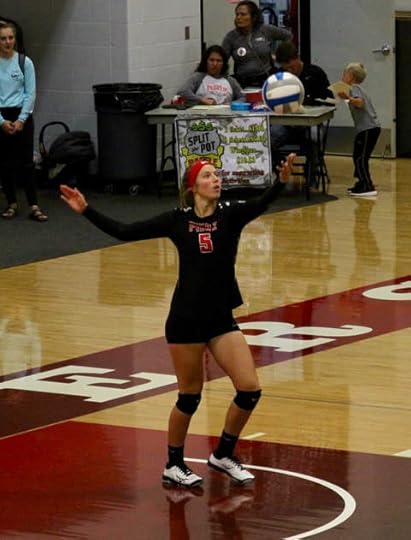













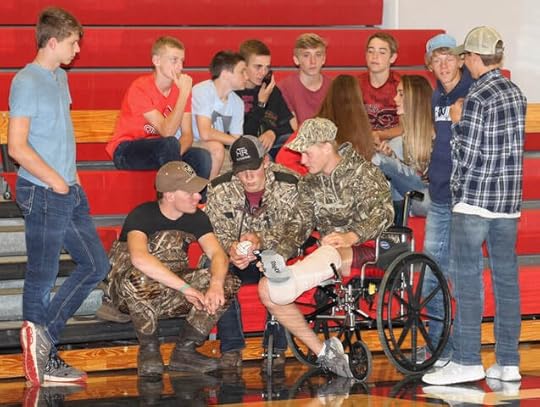










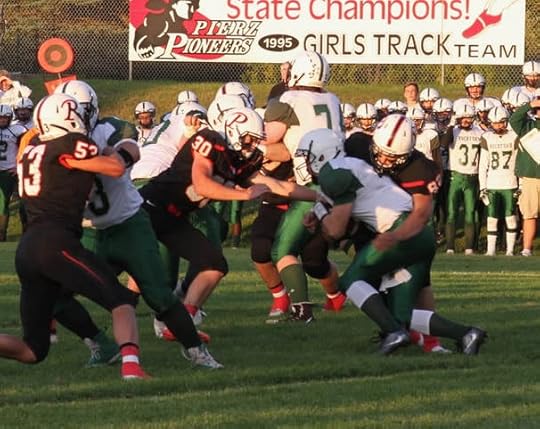
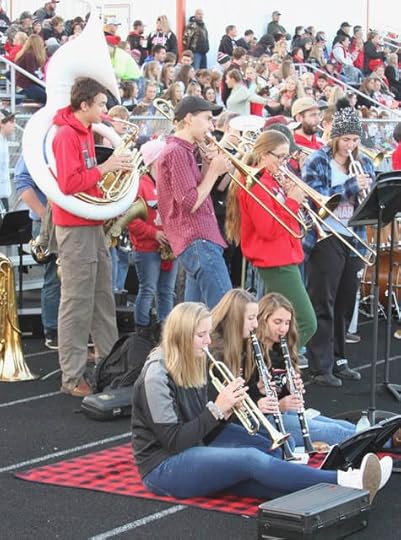

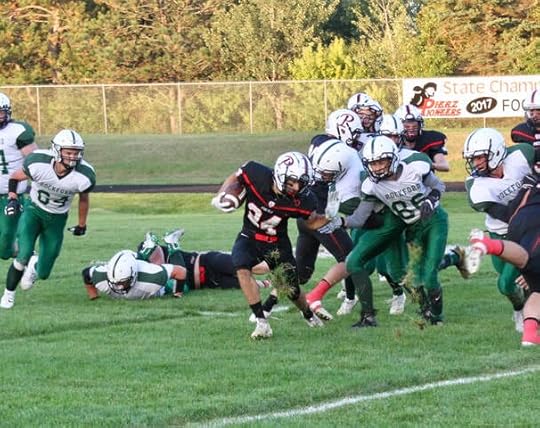
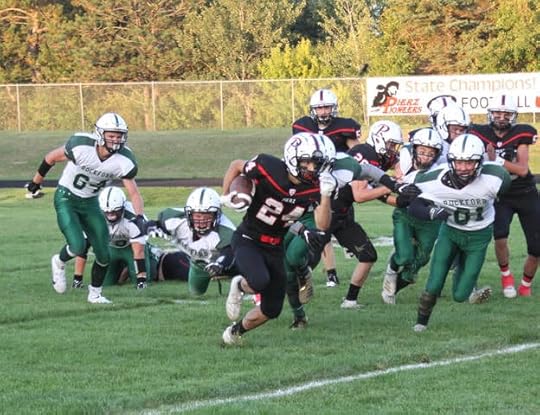
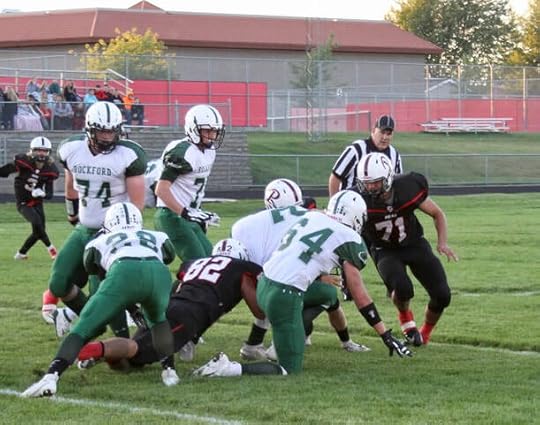
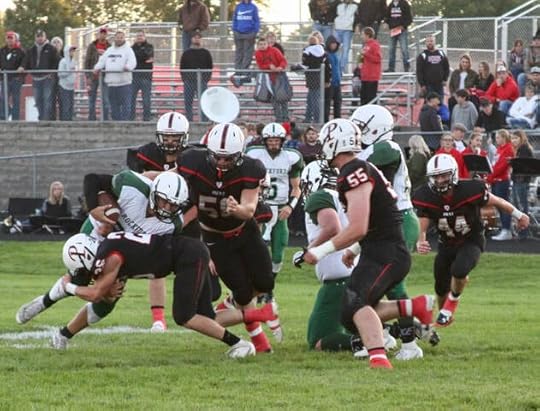
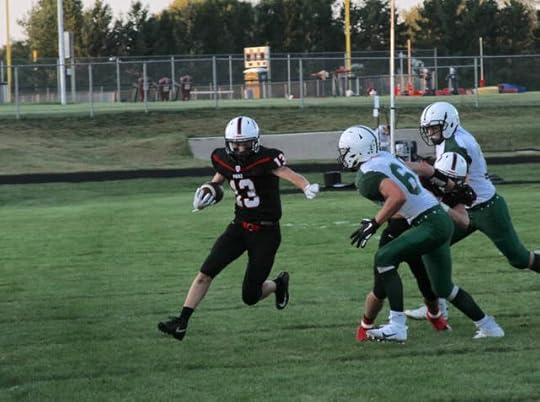
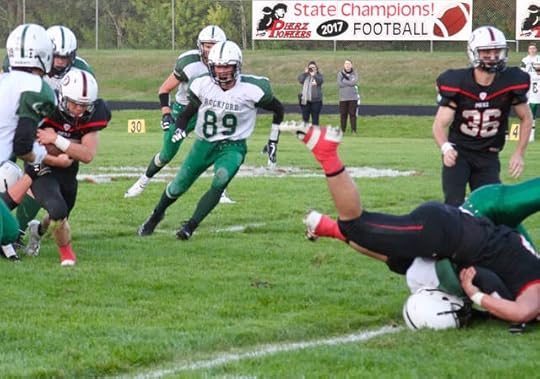

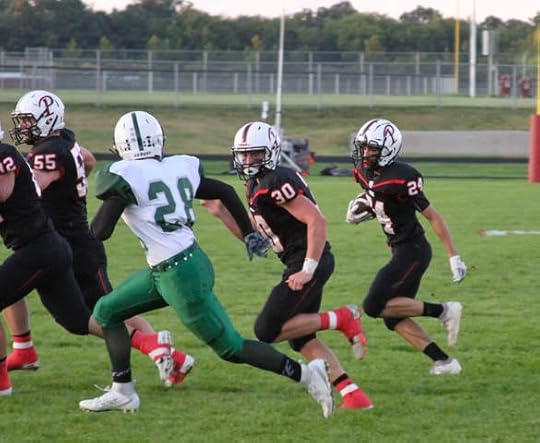
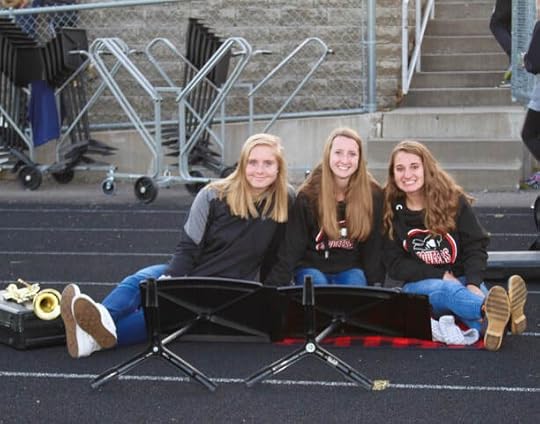
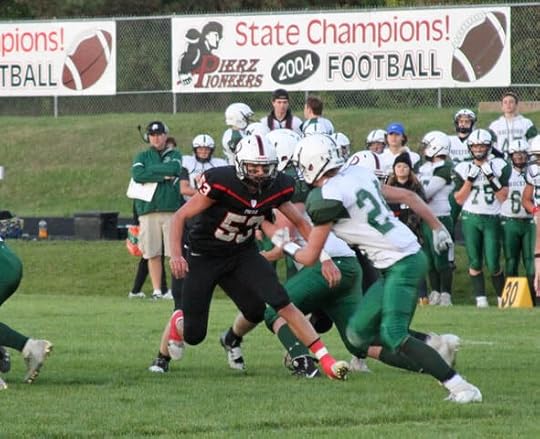
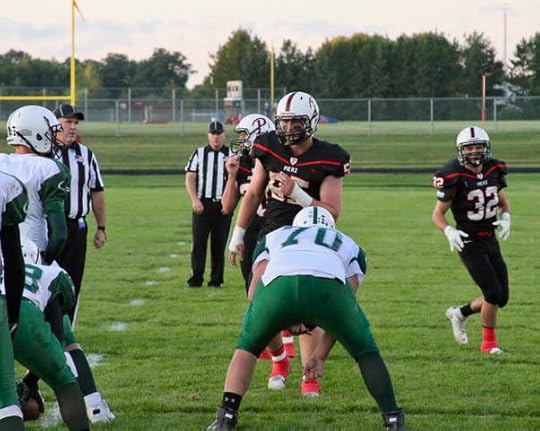

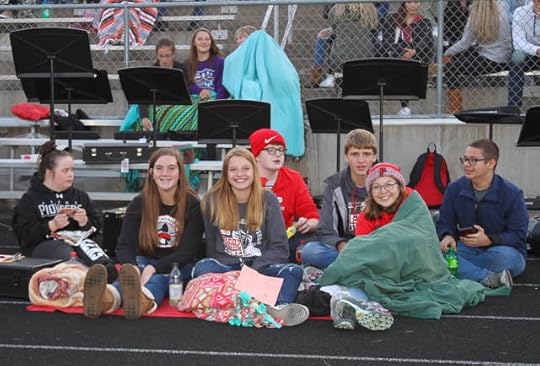

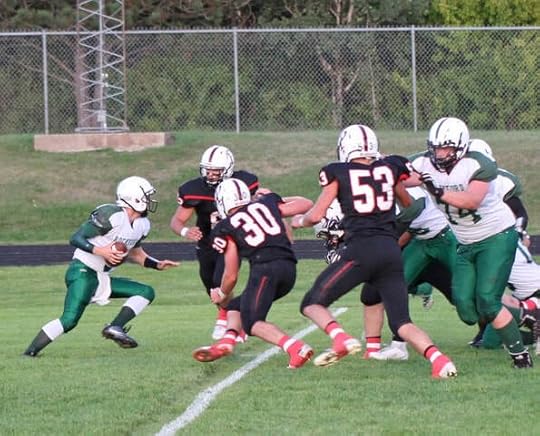
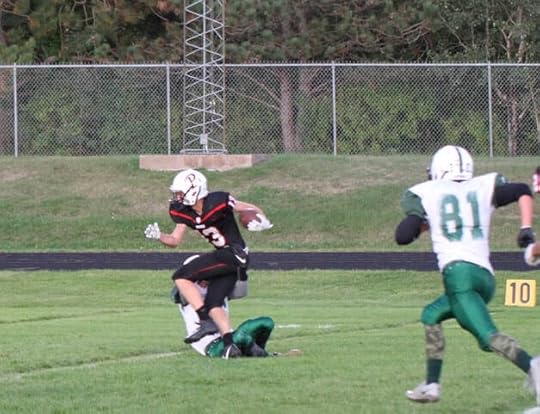
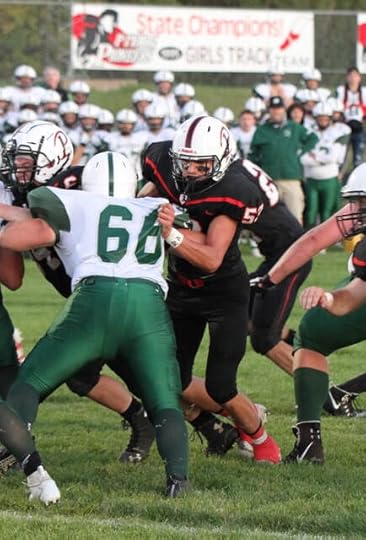

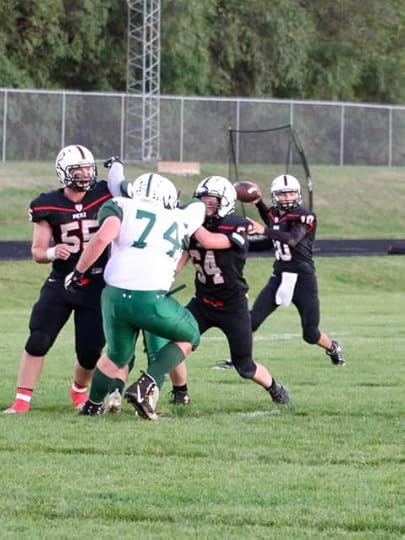
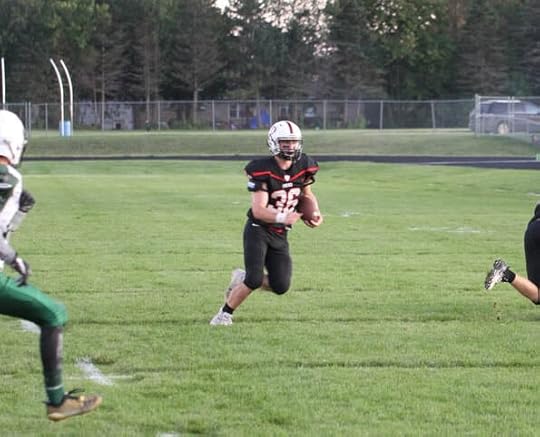
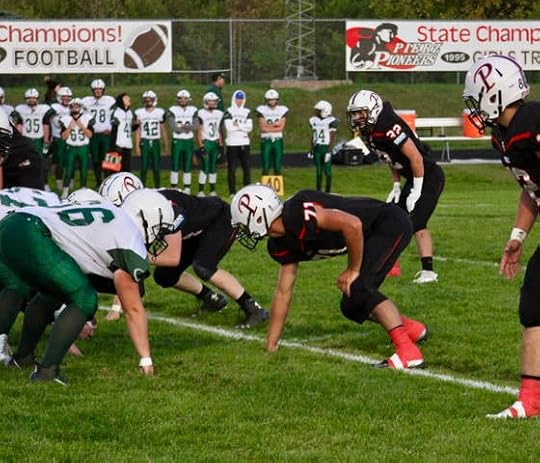
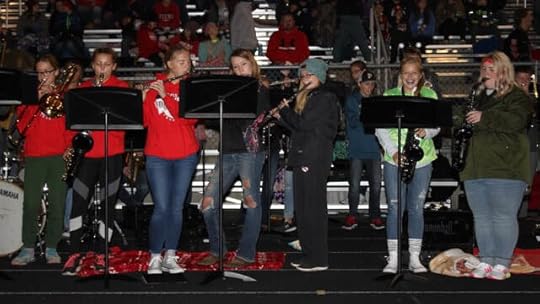
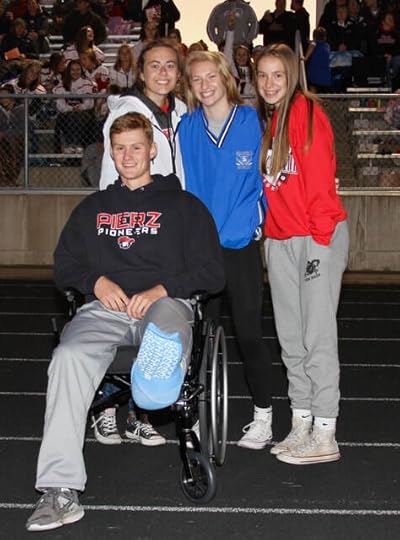
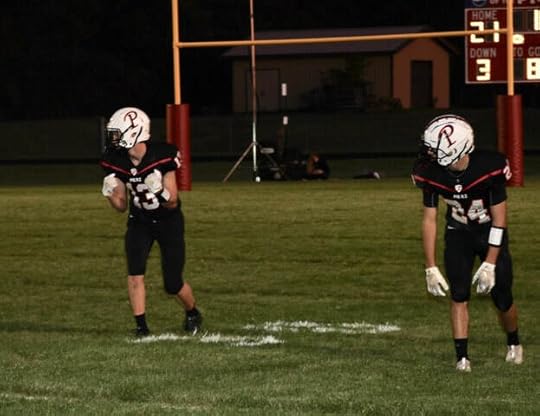

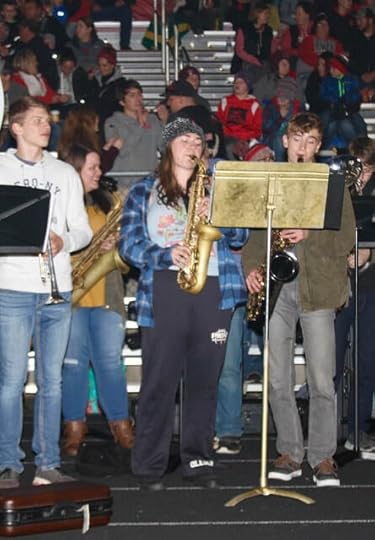
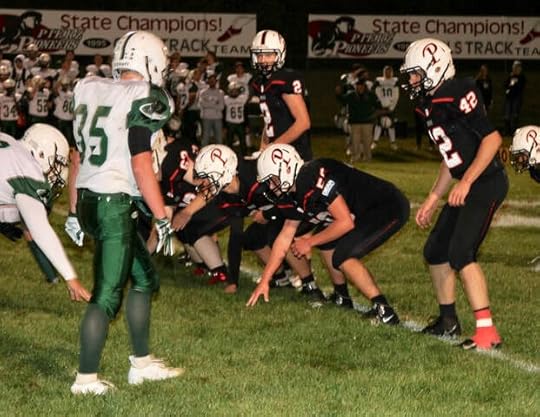








Published on September 19, 2019 18:45
September 1, 2019
Lillie Belle Allen, Henry Schaad and Retaliation
“The same stars shine on everyone in the world.” As I’m enjoying a nice warm summer night in my backyard, I can’t help thinking about how the same stars above me at this moment, were shining on Lillie Belle Allen, as she stood in the street in York, trying to keep a gang from opening fire on her family. Lillie’s story is a tragedy that emphasizes the importance of calming the waters, when responding to painful situations. She tried, but unfortunately for Lillie, she was an innocent bystander, unaware of the hornets’ nest her family had driven into. I worn people to avoid retaliation, because, “Once you make a bad decision, you have no control over how it plays out.” At the same time, a bad decision isn’t permission to keep making bad decisions. I also point out that, “No situation is so bad that you can’t make it worse.” 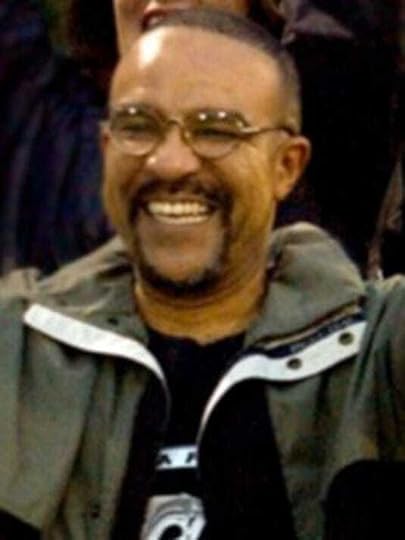 Taka Nii Sweeney, as an adult. On July 17, 1969, a 17-year-old African American, Taka Sweeney, is shot in the back while walking through a white neighborhood in York, Pennsylvania. Taka was shot in retaliation after an African American child, who burned himself playing with lighter fluid, accused a white gang of burning him. This was later discovered to be a lie made up by a boy trying to avoid discipline from his parents. If you’re wondering why people would believe this story, read about the Red Summer of 1919 and the atrocities African Americans suffered in the years following. People believed the story, because this kind of craziness happened. (White gang leader, Robert “Bobby” Messersmith, is eventually identified as the man responsible for shooting Taka, but not before he does significantly more damage.) In 1969, Bobby was convicted of assault for shooting Taka Sweeney and sentenced to 3 years in prison. The shooting of Taka was the event that significantly escalated the York riots, resulting in two murders and 60 injured.
Taka Nii Sweeney, as an adult. On July 17, 1969, a 17-year-old African American, Taka Sweeney, is shot in the back while walking through a white neighborhood in York, Pennsylvania. Taka was shot in retaliation after an African American child, who burned himself playing with lighter fluid, accused a white gang of burning him. This was later discovered to be a lie made up by a boy trying to avoid discipline from his parents. If you’re wondering why people would believe this story, read about the Red Summer of 1919 and the atrocities African Americans suffered in the years following. People believed the story, because this kind of craziness happened. (White gang leader, Robert “Bobby” Messersmith, is eventually identified as the man responsible for shooting Taka, but not before he does significantly more damage.) In 1969, Bobby was convicted of assault for shooting Taka Sweeney and sentenced to 3 years in prison. The shooting of Taka was the event that significantly escalated the York riots, resulting in two murders and 60 injured.
In retaliation for Taka’s shooting, on July 18, 1969, rookie police officer, Henry Schaad, was shot and killed while riding in the back of a SWAT vehicle into an African American neighborhood to assist with quelling rioting. Henry (pictured below) was a kind man and beloved family man. The shooters would later acknowledge they had no idea who was riding in the back of the vehicle.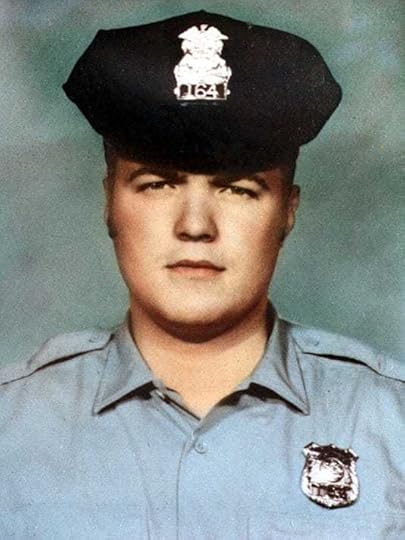 Henry Schaab Two African American males fired on the vehicle when it entered their neighborhood. In 1969, no one in the neighborhood was willing to identify them. Angry over the officer’s death, some police officers attend a white rally in York and officer Charlie Robertson hands out bullets.
Henry Schaab Two African American males fired on the vehicle when it entered their neighborhood. In 1969, no one in the neighborhood was willing to identify them. Angry over the officer’s death, some police officers attend a white rally in York and officer Charlie Robertson hands out bullets.
Three days later, July 21, 1969, Lillie Bell Allen’s family were passing through York. Lillie Bell, age 27, her sister Hattie Dickinson, are on vacation and make a run to the grocery store. Lillie was living in South Carolina and was completely unaware of the racial tensions going on in York. They run into a barricade, blocked by police, and after a brief conversation the police send them through. (The officer would later say that this was the greatest mistake of his career.)
When Lillie’s family drives down Newberry Street, they find white gang members walking the street with guns. Hattie was driving and panicked. She steps on the gas, to get out of there, and the car flooded and stalled on the railroad tracks.
Lillie Bell gets out of the car and asks, “Don’t shoot. I’m going to take the wheel and we’ll be on our way.” Lillie is shot and killed. The gang opens fire on the car putting over 100 bullet holes in the vehicle. It would later be discovered that white people living in this neighborhood had called the police multiple times, before the shooting, and asked them to come and defuse the situation. Approximately 20 armed men were walking the street. The police never showed up.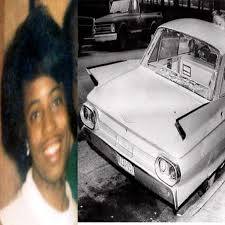 Lillie Bell Allen The national guard is brought in and KKK member John Messersmith’s home is searched. 15 guns are removed, including automatic weapons. John’s son, Bobby Messersmith, was the leader of a white supremist gang, the Newberry Boys. After over 30 years, with both murders unsolved, a task force returns to York to open the Murder Book.
Lillie Bell Allen The national guard is brought in and KKK member John Messersmith’s home is searched. 15 guns are removed, including automatic weapons. John’s son, Bobby Messersmith, was the leader of a white supremist gang, the Newberry Boys. After over 30 years, with both murders unsolved, a task force returns to York to open the Murder Book.
More than thirty years later, Newberry street gang member, Donnie Altman, is brought in and interviewed as a suspect in the shooting. Donnie initially denies being there, but after he’s shown a video of Lillie’s lifeless body, Donnie states he didn’t shoot Lillie Bell, but he did fire a shot into the trunk of the car. Donnie goes home and shoots himself. He leaves behind suicide tapes explaining the incident. In the tapes, Donnie reports Bobby Messersmith had bragged about killing Lillie. The same police officer, Charlie Robinson (who handed out bullets at the rally), was one of the officers who arrived first at the scene. Gang members are standing around with guns, and no one is arrested. They don’t even take a list of names. In 2001, when a special task force is finally pursuing justice, Charlie Robertson is now mayor of York. The task force charges Charlie with murder for providing the ammunition. An autopsy of Lillie Bell reveals she had been killed with a 12 gauge shotgun. This frees Charlie Robertson from his charges, as this wasn’t the ammo he handed out. However, it points the finger at Bobby Messersmith. Bobby’s brother, Arthur, testifies he saw Bobby shoot Lillie Bell Allen. Bobby was given a 9 to 19 year sentence.
Now 32 years after the shooting, citizens of all races are talking to investigators. African American Steven Freeland acknowledges he used a military grade rifle to fire through the wall of a SWAT vehicle, killing rookie police officer Henry Schaad. Steven was given the same sentence as Bobby Messersmith, 9 to 19 years.
Food for thought: In 2018, one person was killed in the United States by an act of Muslim terrorism. 49 people were killed by white supremist groups.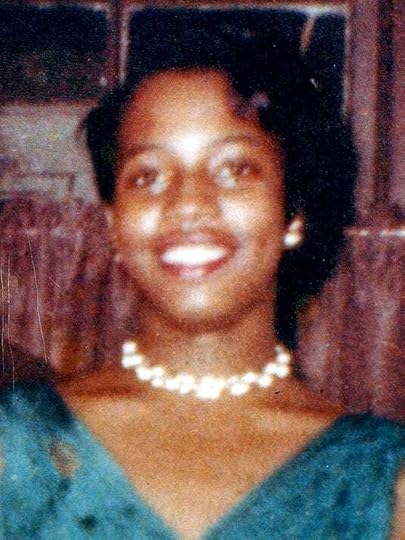 Lillie Bell Allen was a wonderful person and mother. There is a reference from the Bible, John 15:13 on Lillie Bell Allen’s tombstone: ‘Greater love has no one than this. That someone lay down her life for her friends.’ Lillie, I hope you can help us all learn to work through the racial tension with better sense. I gaze back up at the stars and hope I can have some success calming the waters.
Lillie Bell Allen was a wonderful person and mother. There is a reference from the Bible, John 15:13 on Lillie Bell Allen’s tombstone: ‘Greater love has no one than this. That someone lay down her life for her friends.’ Lillie, I hope you can help us all learn to work through the racial tension with better sense. I gaze back up at the stars and hope I can have some success calming the waters.
Thanks for listening,
Frank



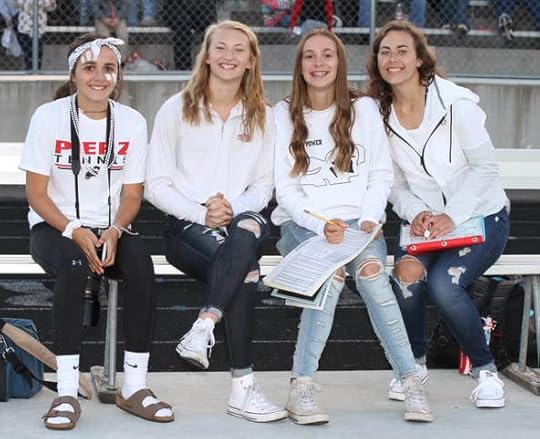

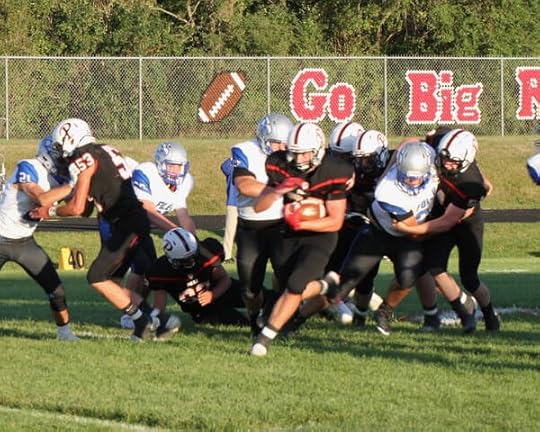

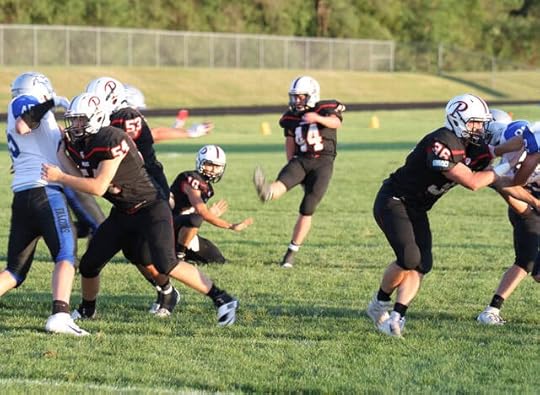
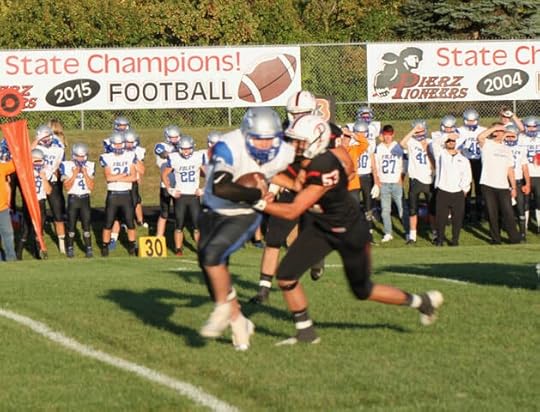
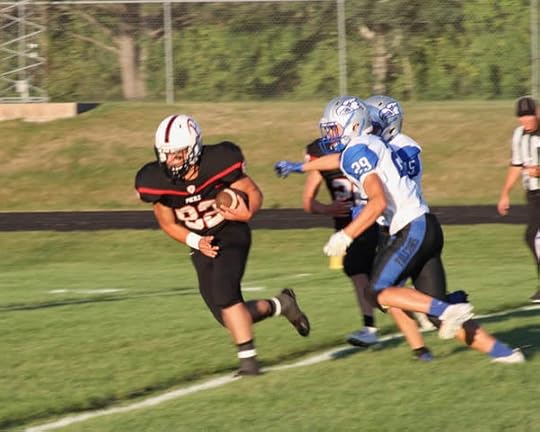
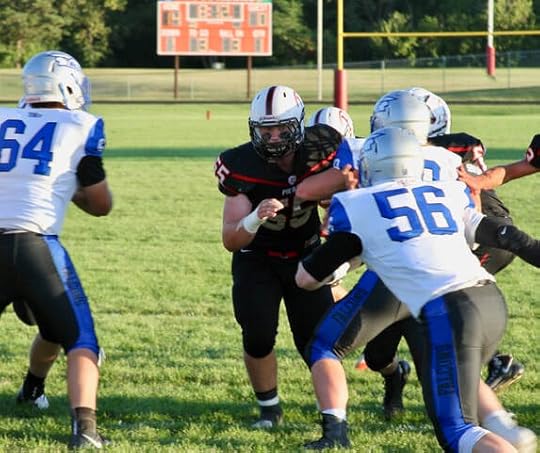
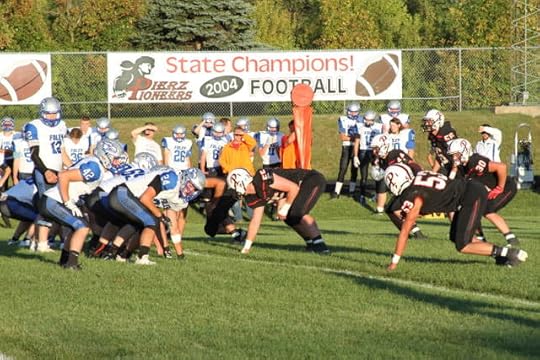

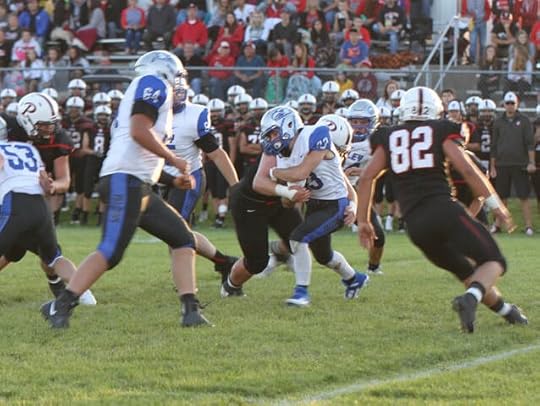
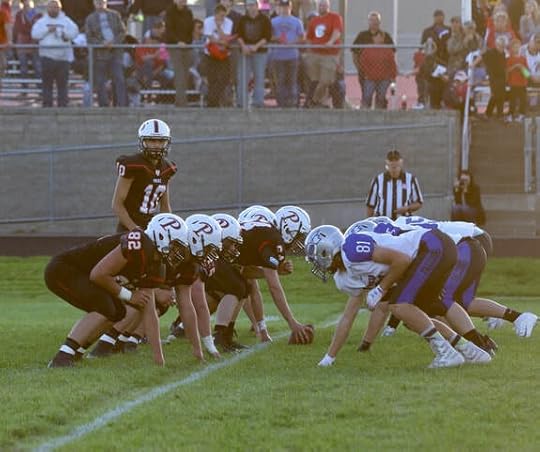
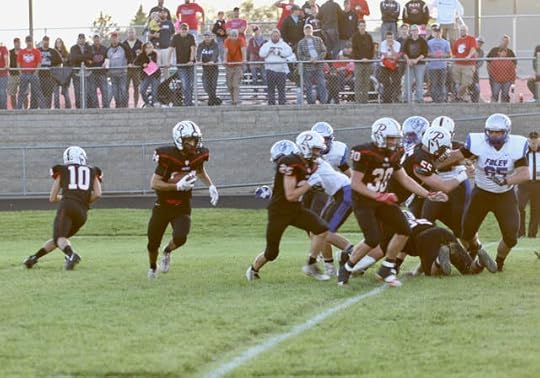

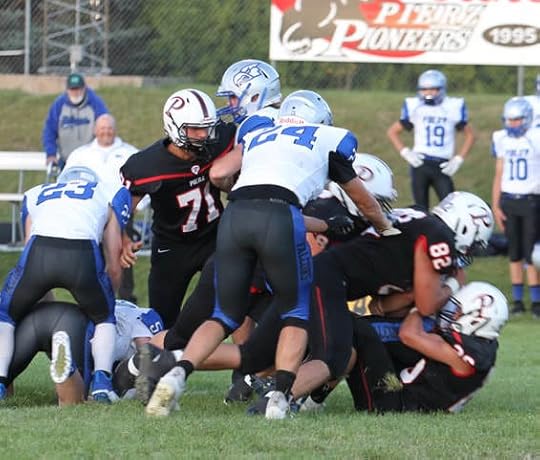
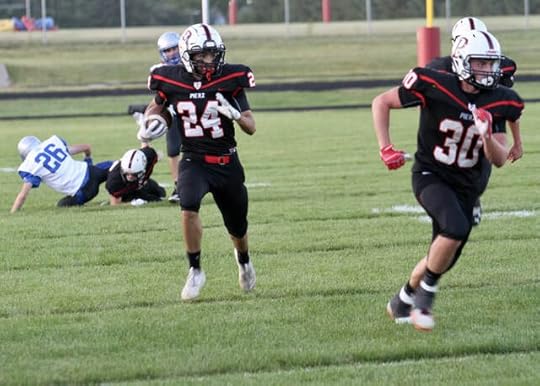
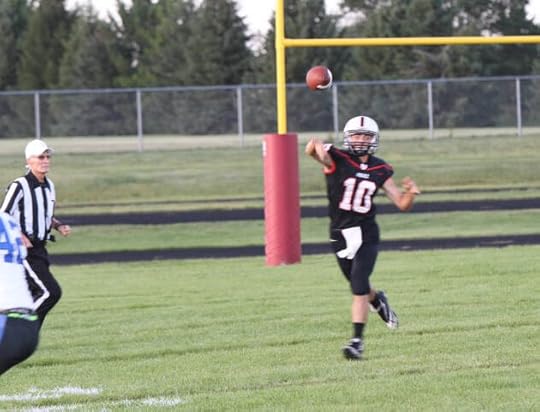
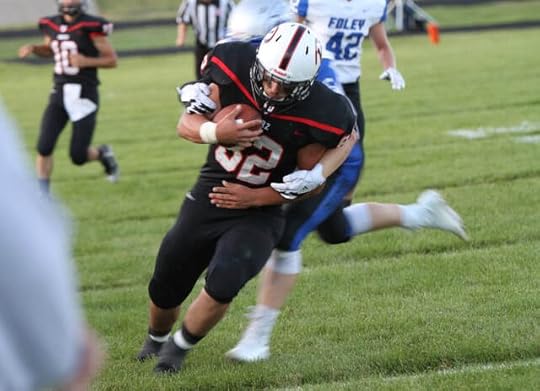

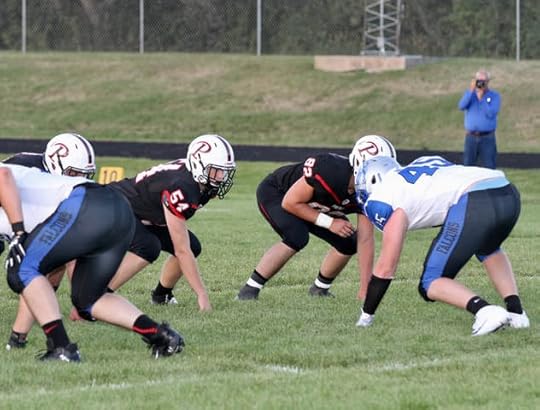
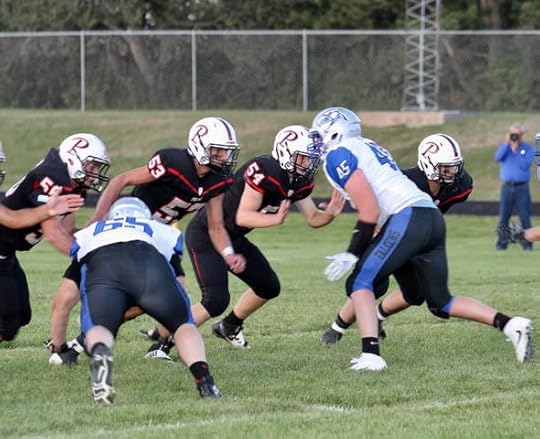
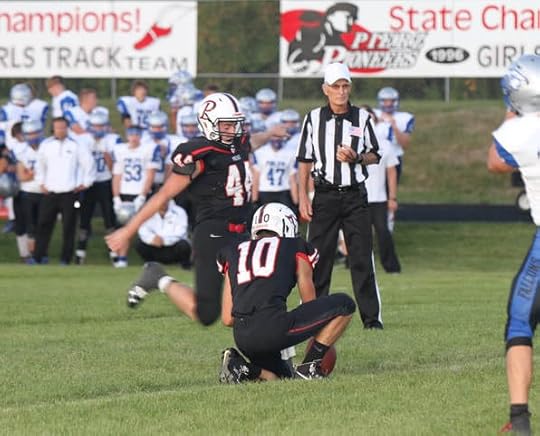
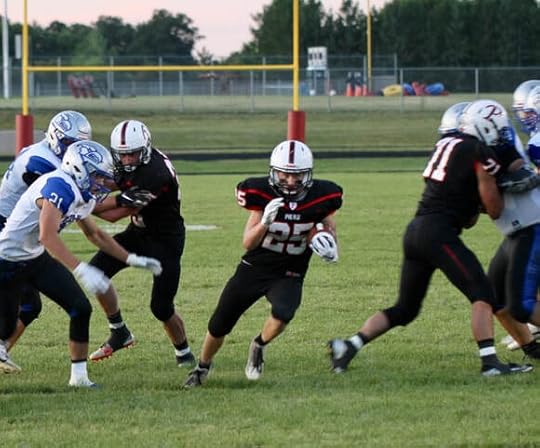
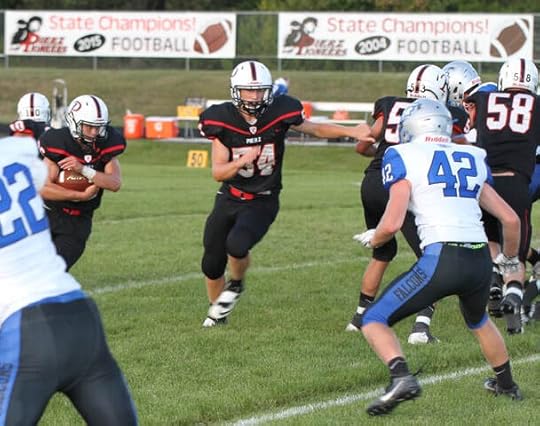
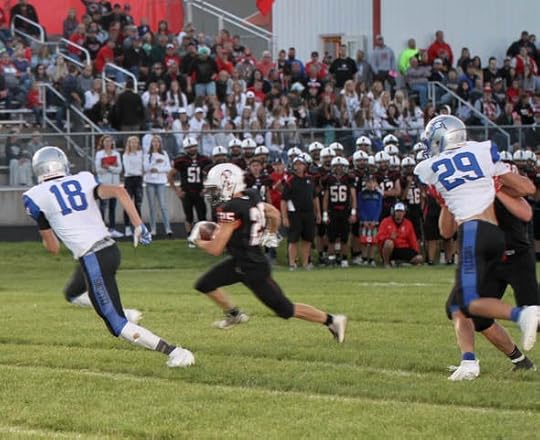
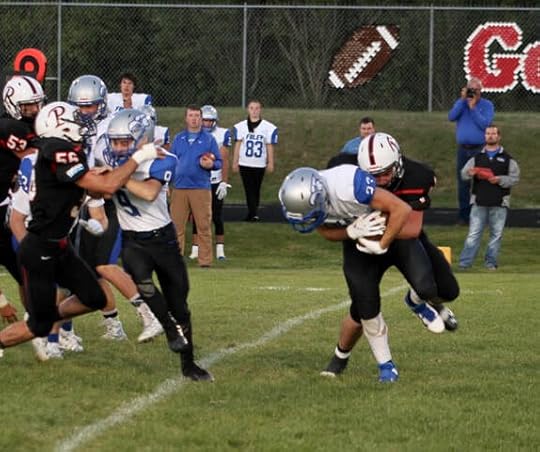
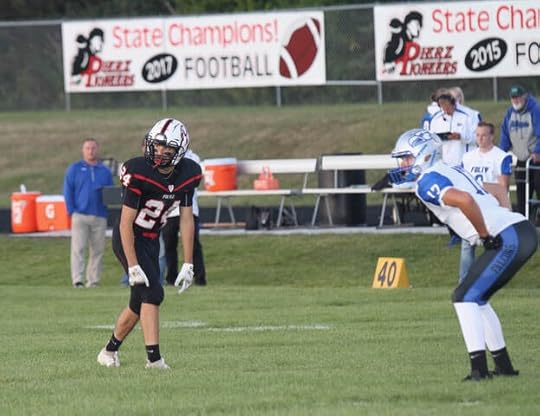
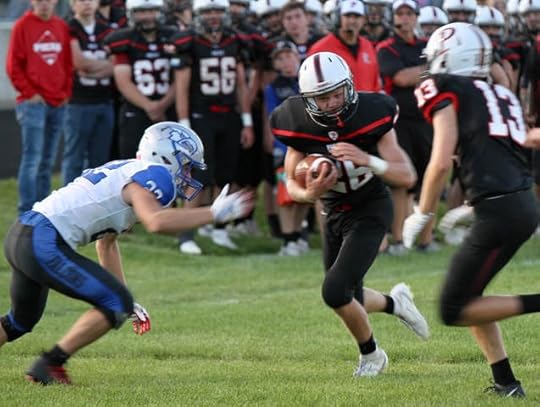
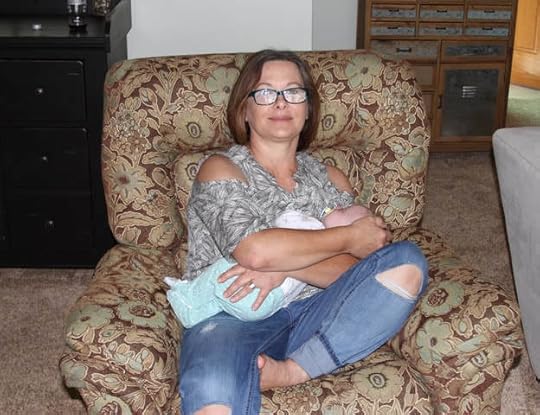
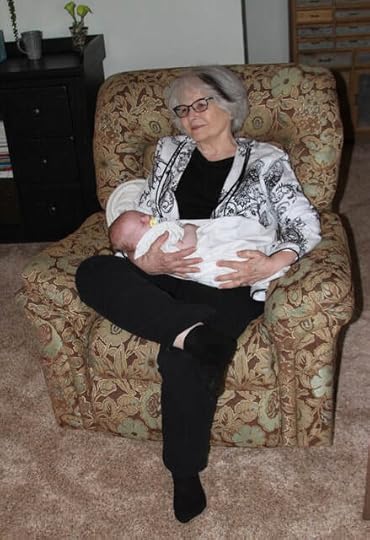
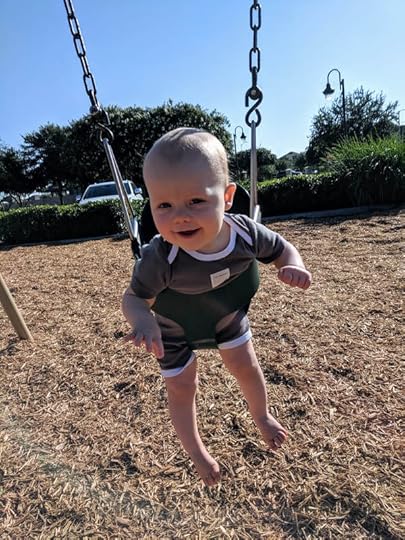
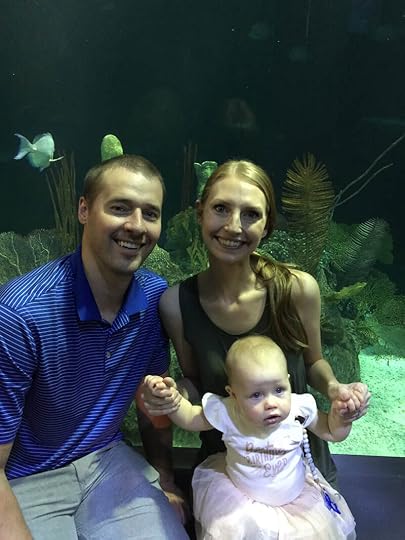
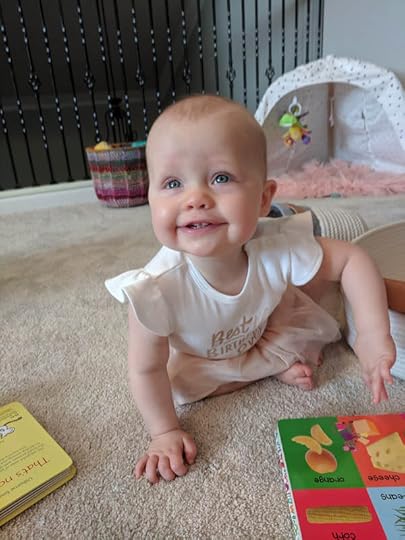
 Taka Nii Sweeney, as an adult. On July 17, 1969, a 17-year-old African American, Taka Sweeney, is shot in the back while walking through a white neighborhood in York, Pennsylvania. Taka was shot in retaliation after an African American child, who burned himself playing with lighter fluid, accused a white gang of burning him. This was later discovered to be a lie made up by a boy trying to avoid discipline from his parents. If you’re wondering why people would believe this story, read about the Red Summer of 1919 and the atrocities African Americans suffered in the years following. People believed the story, because this kind of craziness happened. (White gang leader, Robert “Bobby” Messersmith, is eventually identified as the man responsible for shooting Taka, but not before he does significantly more damage.) In 1969, Bobby was convicted of assault for shooting Taka Sweeney and sentenced to 3 years in prison. The shooting of Taka was the event that significantly escalated the York riots, resulting in two murders and 60 injured.
Taka Nii Sweeney, as an adult. On July 17, 1969, a 17-year-old African American, Taka Sweeney, is shot in the back while walking through a white neighborhood in York, Pennsylvania. Taka was shot in retaliation after an African American child, who burned himself playing with lighter fluid, accused a white gang of burning him. This was later discovered to be a lie made up by a boy trying to avoid discipline from his parents. If you’re wondering why people would believe this story, read about the Red Summer of 1919 and the atrocities African Americans suffered in the years following. People believed the story, because this kind of craziness happened. (White gang leader, Robert “Bobby” Messersmith, is eventually identified as the man responsible for shooting Taka, but not before he does significantly more damage.) In 1969, Bobby was convicted of assault for shooting Taka Sweeney and sentenced to 3 years in prison. The shooting of Taka was the event that significantly escalated the York riots, resulting in two murders and 60 injured. In retaliation for Taka’s shooting, on July 18, 1969, rookie police officer, Henry Schaad, was shot and killed while riding in the back of a SWAT vehicle into an African American neighborhood to assist with quelling rioting. Henry (pictured below) was a kind man and beloved family man. The shooters would later acknowledge they had no idea who was riding in the back of the vehicle.
 Henry Schaab Two African American males fired on the vehicle when it entered their neighborhood. In 1969, no one in the neighborhood was willing to identify them. Angry over the officer’s death, some police officers attend a white rally in York and officer Charlie Robertson hands out bullets.
Henry Schaab Two African American males fired on the vehicle when it entered their neighborhood. In 1969, no one in the neighborhood was willing to identify them. Angry over the officer’s death, some police officers attend a white rally in York and officer Charlie Robertson hands out bullets.
Three days later, July 21, 1969, Lillie Bell Allen’s family were passing through York. Lillie Bell, age 27, her sister Hattie Dickinson, are on vacation and make a run to the grocery store. Lillie was living in South Carolina and was completely unaware of the racial tensions going on in York. They run into a barricade, blocked by police, and after a brief conversation the police send them through. (The officer would later say that this was the greatest mistake of his career.)
When Lillie’s family drives down Newberry Street, they find white gang members walking the street with guns. Hattie was driving and panicked. She steps on the gas, to get out of there, and the car flooded and stalled on the railroad tracks.
Lillie Bell gets out of the car and asks, “Don’t shoot. I’m going to take the wheel and we’ll be on our way.” Lillie is shot and killed. The gang opens fire on the car putting over 100 bullet holes in the vehicle. It would later be discovered that white people living in this neighborhood had called the police multiple times, before the shooting, and asked them to come and defuse the situation. Approximately 20 armed men were walking the street. The police never showed up.
 Lillie Bell Allen The national guard is brought in and KKK member John Messersmith’s home is searched. 15 guns are removed, including automatic weapons. John’s son, Bobby Messersmith, was the leader of a white supremist gang, the Newberry Boys. After over 30 years, with both murders unsolved, a task force returns to York to open the Murder Book.
Lillie Bell Allen The national guard is brought in and KKK member John Messersmith’s home is searched. 15 guns are removed, including automatic weapons. John’s son, Bobby Messersmith, was the leader of a white supremist gang, the Newberry Boys. After over 30 years, with both murders unsolved, a task force returns to York to open the Murder Book.
More than thirty years later, Newberry street gang member, Donnie Altman, is brought in and interviewed as a suspect in the shooting. Donnie initially denies being there, but after he’s shown a video of Lillie’s lifeless body, Donnie states he didn’t shoot Lillie Bell, but he did fire a shot into the trunk of the car. Donnie goes home and shoots himself. He leaves behind suicide tapes explaining the incident. In the tapes, Donnie reports Bobby Messersmith had bragged about killing Lillie. The same police officer, Charlie Robinson (who handed out bullets at the rally), was one of the officers who arrived first at the scene. Gang members are standing around with guns, and no one is arrested. They don’t even take a list of names. In 2001, when a special task force is finally pursuing justice, Charlie Robertson is now mayor of York. The task force charges Charlie with murder for providing the ammunition. An autopsy of Lillie Bell reveals she had been killed with a 12 gauge shotgun. This frees Charlie Robertson from his charges, as this wasn’t the ammo he handed out. However, it points the finger at Bobby Messersmith. Bobby’s brother, Arthur, testifies he saw Bobby shoot Lillie Bell Allen. Bobby was given a 9 to 19 year sentence.
Now 32 years after the shooting, citizens of all races are talking to investigators. African American Steven Freeland acknowledges he used a military grade rifle to fire through the wall of a SWAT vehicle, killing rookie police officer Henry Schaad. Steven was given the same sentence as Bobby Messersmith, 9 to 19 years.
Food for thought: In 2018, one person was killed in the United States by an act of Muslim terrorism. 49 people were killed by white supremist groups.
 Lillie Bell Allen was a wonderful person and mother. There is a reference from the Bible, John 15:13 on Lillie Bell Allen’s tombstone: ‘Greater love has no one than this. That someone lay down her life for her friends.’ Lillie, I hope you can help us all learn to work through the racial tension with better sense. I gaze back up at the stars and hope I can have some success calming the waters.
Lillie Bell Allen was a wonderful person and mother. There is a reference from the Bible, John 15:13 on Lillie Bell Allen’s tombstone: ‘Greater love has no one than this. That someone lay down her life for her friends.’ Lillie, I hope you can help us all learn to work through the racial tension with better sense. I gaze back up at the stars and hope I can have some success calming the waters.Thanks for listening,
Frank




































Published on September 01, 2019 19:15
August 23, 2019
Murder Book on Rick Johnson in Paynesville. Precursors to mass shootings. Gibson guitars get their start in Palisade.
I have had some interesting conversations after recent radio interviews (separate from my work). I received a call from someone who asked me to look into a murder that occurred before I was born. On January 26, 1960, an unsolved murder occurred in Paynesville. Rick and Bob Johnson owned an Ever Ready gas station, just off the main drag. A couple stopped in at 7:00 a.m. and waited for Rick to fill their car with gas. They honked the horn and he still didn’t respond. They could see him sitting in the chair inside. Rick was a nice guy, and he opened the station at 6:00 a.m., so they thought they’d give him a little grief about falling asleep. When they entered they saw Rick had been shot 3 times and was dead. The till drawer was open and empty. Rick had died for $123. Ironically, the safe behind Rick was open, and no money from the safe was taken. This may be because Rick fell back when he was shot and partially rested over the safe door, so the killer may not have even seen the safe there. Was it a stranger passing through in the early morning, or a local? He didn’t know of the safe, but the gas station wasn’t on the main drag. A couple people drove by after he opened, but I’m not aware of anyone offering useful information. The problem with this case is that it is now 59 years old, but I’m putting it out there in case anyone has advice.
I did a blog months ago on a murder in Fargo. I have a theory of who committed the murder, but have been requested to say nothing more about it. Knowing who committed a crime isn’t the same as being able to prosecute it. Further, without access to the Murder Book, I wouldn’t want to publicly identify the individuals. The consequences of being wrong are severe for the accused. The protest signs aren't working. Some statistics on mass shooters:
The protest signs aren't working. Some statistics on mass shooters:
When politicians say it’s a mental illness issue, I don’t argue. But the next question should always be, “If that’s the case, why do we continually cut funding for mental health services?” We do have a mental illness issue, in that we generally incarcerate them and leave them without access to treatment. Being mentally ill is scary. For one thing, you’re 5 times more likely to be murdered.
-More than 50% of individuals who engage in mass shootings have a history of domestic violence.
-Individuals with a previous act of violence against a partner are 7 times more likely to be violent.
-Individuals who abuse alcohol or illegal drugs are 7 times more likely to be violent.
Violent behavior usually starts with: An unresolved grievance.Dwelling on the long-term grudge escalates ideation. Research and preparation (usually takes place online). May test rules (bring gun to work or school) to see if anyone notices. Most attacks are preceded by threats or leakage. (Leakage refers to communicating to a third party the intent to harm.)
Violence is most closely associated with mental illness when there is:Comorbid substance useActive positive symptoms of mental illnessNonadherence to treatmentCurrent state of illness with mixed mania being particularly dangerous
THREATS (mnemonic). If someone has a better T word to describe alcohol and drug abuse I’m open to suggestions.
T = Take seriously
H = History of violence
R = Recent stressor (relationship, money, housing, work, injury, illness)
E = Externalizes blame (takes no responsibility)
A = Agitated (or hostile style)
T = Toxins (Drug or alcohol abuse)
S = Suicidality (or increasing hopelessness)
An interesting statistic: The homicide rate is actually significantly lower today than it was in the 1980’s. While less people are being murdered, more are being murdered as a result of mass shootings. The answer is to get people to talk to each other, which is a challenge in today’s world when it’s so much easier to be divisive. The favor I’m asking is that you not be part of the problem.
Thank you Mike and Terri Binder for taking Brenda and I out to eat, and giving me the opportunity to talk about Murder Book with a large book club in Rosemount. After a year of speaking on The I-94 Murders it was a nice change. Lots of great questions and a great time!
It’s been a great summer! I’ve enjoyed many wonderful conversations with a variety of people all over the state. I’ve sold a ton of books at the Arts Festivals in Brainerd, Detroit Lakes and Battle Lake. One conversation in particular at a class reunion brought me to Superior Thermowood in Palisade, Minnesota. John Bieganek runs a crew that gives specialized treatment of wood that Gibson is now using in their guitars. John and I discussed wood instruments. I shared how Antonio Stradivari made violins in the 1600’s by using wood that had soaked in water for a century (which cleaned all the resins out), and then dried the wood. John shared he has a kiln (which is bigger than my kitchen) they use to produce the same effect in weeks. I have included a picture of me standing by the kiln door.
Thanks for listening,
Frank James Vietch is an individual who enjoys responding to the variety of misdirected emails and spam messages. Here is an example: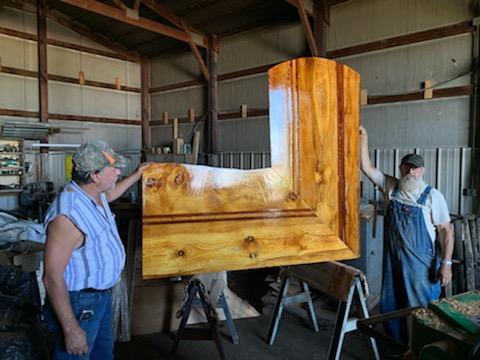









I did a blog months ago on a murder in Fargo. I have a theory of who committed the murder, but have been requested to say nothing more about it. Knowing who committed a crime isn’t the same as being able to prosecute it. Further, without access to the Murder Book, I wouldn’t want to publicly identify the individuals. The consequences of being wrong are severe for the accused.
 The protest signs aren't working. Some statistics on mass shooters:
The protest signs aren't working. Some statistics on mass shooters:When politicians say it’s a mental illness issue, I don’t argue. But the next question should always be, “If that’s the case, why do we continually cut funding for mental health services?” We do have a mental illness issue, in that we generally incarcerate them and leave them without access to treatment. Being mentally ill is scary. For one thing, you’re 5 times more likely to be murdered.
-More than 50% of individuals who engage in mass shootings have a history of domestic violence.
-Individuals with a previous act of violence against a partner are 7 times more likely to be violent.
-Individuals who abuse alcohol or illegal drugs are 7 times more likely to be violent.
Violent behavior usually starts with: An unresolved grievance.Dwelling on the long-term grudge escalates ideation. Research and preparation (usually takes place online). May test rules (bring gun to work or school) to see if anyone notices. Most attacks are preceded by threats or leakage. (Leakage refers to communicating to a third party the intent to harm.)
Violence is most closely associated with mental illness when there is:Comorbid substance useActive positive symptoms of mental illnessNonadherence to treatmentCurrent state of illness with mixed mania being particularly dangerous
THREATS (mnemonic). If someone has a better T word to describe alcohol and drug abuse I’m open to suggestions.
T = Take seriously
H = History of violence
R = Recent stressor (relationship, money, housing, work, injury, illness)
E = Externalizes blame (takes no responsibility)
A = Agitated (or hostile style)
T = Toxins (Drug or alcohol abuse)
S = Suicidality (or increasing hopelessness)
An interesting statistic: The homicide rate is actually significantly lower today than it was in the 1980’s. While less people are being murdered, more are being murdered as a result of mass shootings. The answer is to get people to talk to each other, which is a challenge in today’s world when it’s so much easier to be divisive. The favor I’m asking is that you not be part of the problem.
Thank you Mike and Terri Binder for taking Brenda and I out to eat, and giving me the opportunity to talk about Murder Book with a large book club in Rosemount. After a year of speaking on The I-94 Murders it was a nice change. Lots of great questions and a great time!
It’s been a great summer! I’ve enjoyed many wonderful conversations with a variety of people all over the state. I’ve sold a ton of books at the Arts Festivals in Brainerd, Detroit Lakes and Battle Lake. One conversation in particular at a class reunion brought me to Superior Thermowood in Palisade, Minnesota. John Bieganek runs a crew that gives specialized treatment of wood that Gibson is now using in their guitars. John and I discussed wood instruments. I shared how Antonio Stradivari made violins in the 1600’s by using wood that had soaked in water for a century (which cleaned all the resins out), and then dried the wood. John shared he has a kiln (which is bigger than my kitchen) they use to produce the same effect in weeks. I have included a picture of me standing by the kiln door.
Thanks for listening,
Frank James Vietch is an individual who enjoys responding to the variety of misdirected emails and spam messages. Here is an example:










Published on August 23, 2019 06:44
June 29, 2019
Denise Sam-Cali ends an 18 year old’s Murderous Rampage
I realize I’m a little late getting out my last round of high school baseball pictures. It’s been a crazy busy beginning of summer, including some great news for my writing. I have been interviewed for a national television show regarding my writing and forensic work. It will air in January of 2020. I will share more when I have permission. 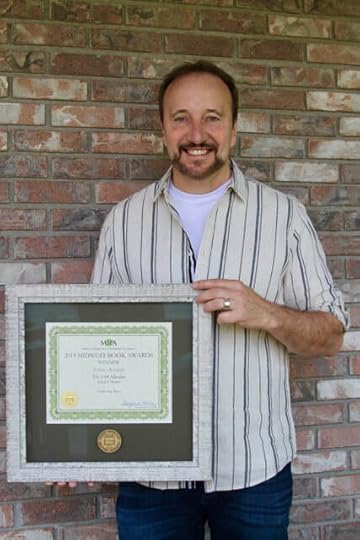 On Sunday, June 30, 2019 I will be signing and selling books at Arts in the Park in Brainerd, Minnesota from 10:00 am – 4:00 pm. Arts in the Park is located at Gregory Park, 424 N 5th Street, Brainerd Minnesota. Background
On Sunday, June 30, 2019 I will be signing and selling books at Arts in the Park in Brainerd, Minnesota from 10:00 am – 4:00 pm. Arts in the Park is located at Gregory Park, 424 N 5th Street, Brainerd Minnesota. Background
The teen killer whose crimes are outlined below came from the following background: His father was an alcoholic who physically and emotionally abused his mother, and eventually left the family. His father was later incarcerated for beating his new girlfriend to death.
As a young adolescent, before the murders, this teen killer had frequently stolen women's underwear.
CrimesIn 1990, a teenage male removed the screen from the bedroom window and began beating 13-year-old Leslie Gerhart with a brick. Leslie had a friend staying over for the evening and managed to survive the attempt on her life. It is suspected this male is the same man later sentenced to death for the following crimes. If true, her assailant was 15-years-old at the time. Joan Burghardt, a 29-year-old nurse's aide, was getting ready for bed the evening of August 9, 1992, when a young male broke into her east Allentown apartment, raped her and beat her, inflicting 37 injuries. Her killer would initially be sentenced to death, but because he was only 17 years old, the sentence would be reduced to life in prison. On August 9, he was just getting started on his rampage.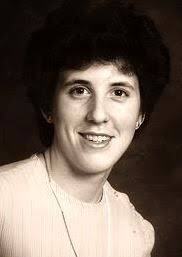 There wasn’t another murder for 10 months. It was later discovered that between the murders of Joan Burghardt and Charlotte Schmoyer, their killer, who had now turned 18, was arrested for burglary and served eight months in prison.Charlotte Schmoyer, a 15-year-old newspaper carrier for The Morning Call was abducted, raped and stabbed in June of 1993. When a customer saw Charlotte’s newspaper cart outside her house, but no sign of Charlotte, she called the paper. When no one from The Morning Call could locate her, they called the police. Charlotte’s body was found in a wooded area nearby. She had been stabbed over 20 times. Charlotte Schmoyer was a student at Louis E. Dieruff High School.
There wasn’t another murder for 10 months. It was later discovered that between the murders of Joan Burghardt and Charlotte Schmoyer, their killer, who had now turned 18, was arrested for burglary and served eight months in prison.Charlotte Schmoyer, a 15-year-old newspaper carrier for The Morning Call was abducted, raped and stabbed in June of 1993. When a customer saw Charlotte’s newspaper cart outside her house, but no sign of Charlotte, she called the paper. When no one from The Morning Call could locate her, they called the police. Charlotte’s body was found in a wooded area nearby. She had been stabbed over 20 times. Charlotte Schmoyer was a student at Louis E. Dieruff High School. 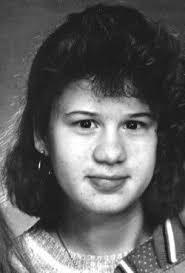 After the murder of Charlotte Schmoyer, the killer was almost apprehended when he was pulled over for a speeding violation, but he received his speeding ticket and left.On June 28, 1993, the teen killer next broke into Denise Sam-Cali’s home. She managed to break free of his grip and ran outside. Like a scene from a horror movie, the killer managed to catch her, and pinned her on the ground. He beat her, raped her and choked her. A neighbor turned on the light and came outside, which finally scared the killer away. Jessica Jean Fortney, a 47-year-old young grandmother, was raped and strangled in her home on July 14, 1993. (pictured below) The killer didn’t know the granddaughter had witnessed part of the brutal assault and was able to give a description to the police.
After the murder of Charlotte Schmoyer, the killer was almost apprehended when he was pulled over for a speeding violation, but he received his speeding ticket and left.On June 28, 1993, the teen killer next broke into Denise Sam-Cali’s home. She managed to break free of his grip and ran outside. Like a scene from a horror movie, the killer managed to catch her, and pinned her on the ground. He beat her, raped her and choked her. A neighbor turned on the light and came outside, which finally scared the killer away. Jessica Jean Fortney, a 47-year-old young grandmother, was raped and strangled in her home on July 14, 1993. (pictured below) The killer didn’t know the granddaughter had witnessed part of the brutal assault and was able to give a description to the police.  The 18-year-old killer had a fifth victim, only 5 years of age when Harvey broke into her house. Harvey had stalked the girl’s mother for days beforehand, as he did his other victims. He intended to rape (and possibly kill) the child’s mother, but changed his mind when he saw her in bed with a boyfriend. Instead, he crept into a room shared by the 5 year old and her younger sister. He raped the 5 year old, choked her, and left her for dead.
The 18-year-old killer had a fifth victim, only 5 years of age when Harvey broke into her house. Harvey had stalked the girl’s mother for days beforehand, as he did his other victims. He intended to rape (and possibly kill) the child’s mother, but changed his mind when he saw her in bed with a boyfriend. Instead, he crept into a room shared by the 5 year old and her younger sister. He raped the 5 year old, choked her, and left her for dead.
Capture
Denise Sam-Cali suspected the killer would return—knowing she could identify him. On July 18, 1993, at 4:00 a.m. her home was broken into, but the burglar escaped when the alarm went off.
The police decided to sneak an officer into the Sam-Cali home at night for two weeks. Denise and her husband would come home as usual. On the 12th night, July 31, 1993, Officer Brian Lewis heard a sound outside. Minutes later, a screen was popped off. The officer was in the dark. The killer had returned to finish the job. When Brian shouted, “Don’t move!” The killer raised his gun. A shootout erupted. Brian had a revolver, and after 6 shots his gun was empty. The killer escaped through a kitchen window, but was wounded. The police checked the hospitals in the area and within two hours they had their suspect. 18-year-old Harvey Robinson was arrested at the hospital. DNA linked Robinson to the crimes.
Harvey Robinson had a girlfriend at the time of his assaults. He had begun his murderous rampage with an assault at age 15.
Harvey Miguel Robinson (born December 6, 1974) is currently imprisoned on death row in Pennsylvania. Only 18 years old when apprehended for the crimes, he is one of the youngest serial killers in American history. He is also the first serial killer in the history of Allentown, Pennsylvania.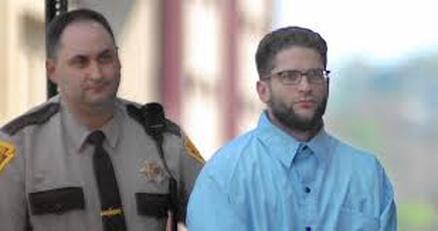

Background
Harvey M. Robinson was born on December 6, 1974. He grew up in a troubled family. As a child, he was known to throw tantrums. His father, Harvey Rodriguez Robinson, was an alcoholic and was physically and emotionally abusive toward his mother. His parents divorced when he was 3. Harvey Rodriguez Robinson ended up going to prison for manslaughter after beating his mistress to death. The younger Harvey idolized his father, regardless of his abusive and criminal behavior.
Before the murders, Harvey Robinson (Jr.) had frequently stolen women's underwear. From the age of 9 to 17, he was arrested numerous times for crimes including burglary and resisting arrest. School counselors determined that Harvey suffered from severe conduct disorder. He was also a known substance abuser, which added to his propensity towards impulsive aggressive behavior.
Aftermath
Robinson was sentenced to death for his crimes. As of April 2006, Robinson's execution had been stayed. He was later resentenced to life imprisonment for the murder of Joan Burghardt because he was 17 when the crime was committed. As of 2010, Robinson was to face another jury to decide the penalty for Charlotte Schmoyer. On December 14, 2012, Robinson agreed to waive his appeal rights in the Schmoyer case in exchange for a life sentence. In December 2013, the Pennsylvania Supreme Court upheld Robinson's death penalty in the Fortney murder. His current sentence is 1 death sentence, 2 life sentences, plus 97 years for rape.
Denise, Leslie, and an unnamed 5-year-old girl, are heroes for surviving the rage of a terrible, self-centered psychopath. Denise, with help from a brave police officer, Brian Lewis, captured him. Harvey Robinson has never expressed remorse. Harvey Robinson is serving his time in Graterford State Prison. This might be his most pleasant stay for the rest of eternity.
Denise Sam-Cali stated, “Harvey Robinson is nothing. Not even a grown man. He’s just nothing.”
Thanks for listening,
Frank















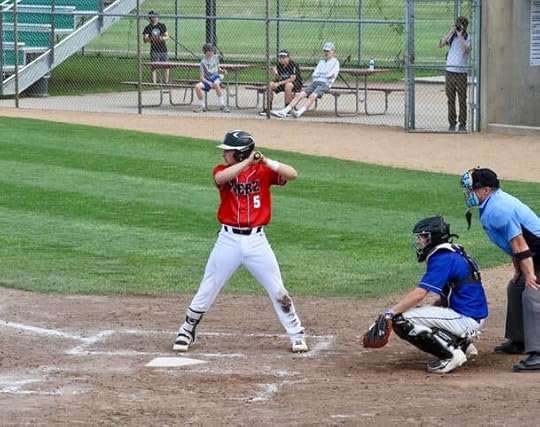









 Thursday “Rock and Stroll” nights in Pierz
Thursday “Rock and Stroll” nights in Pierz 


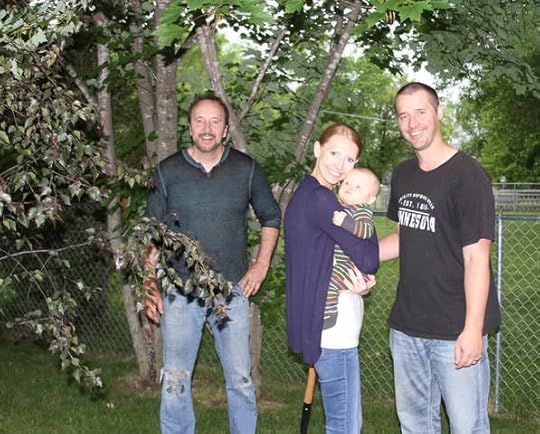

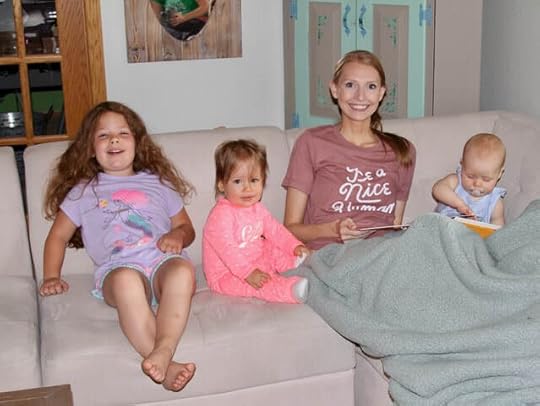



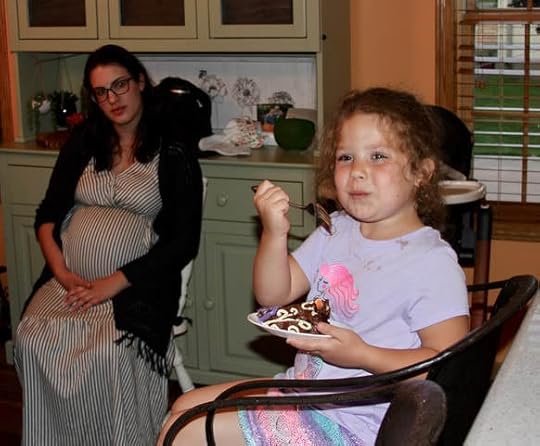
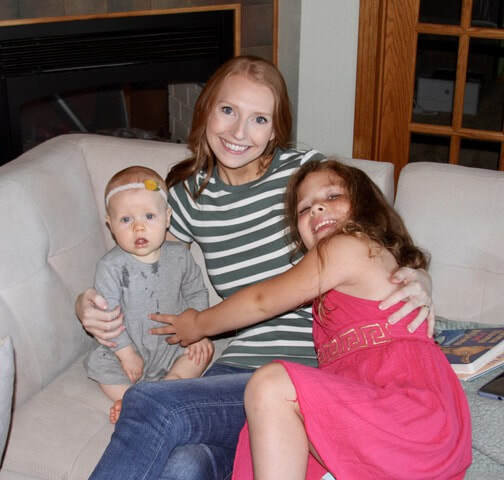
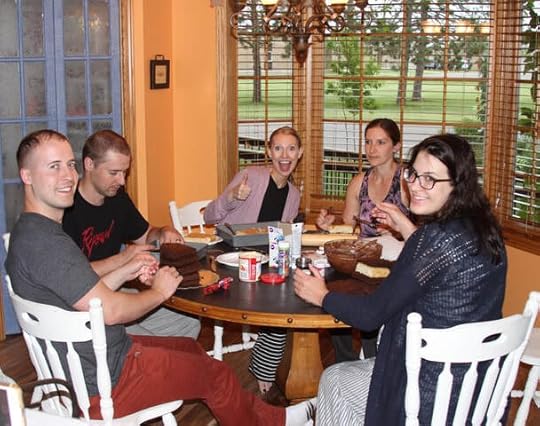
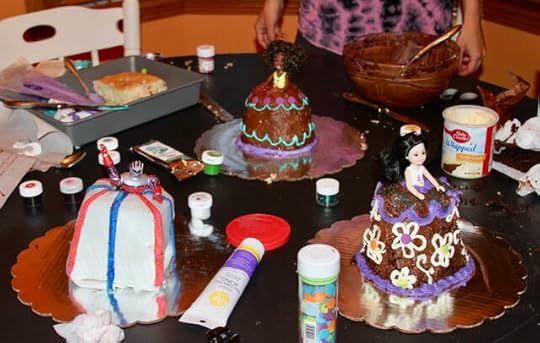 It was fun having the children fly in from out of state to spend a week together. My 5-year-old granddaughter told us she wanted to set up a “Nailed It” cooking competition where 3 sets of adults would need to bake a cake that looked either like a princess or an action hero, and she would go around and either offer advice, or annoy the contestants, depending on the request. We obliged her and it was very entertaining.
It was fun having the children fly in from out of state to spend a week together. My 5-year-old granddaughter told us she wanted to set up a “Nailed It” cooking competition where 3 sets of adults would need to bake a cake that looked either like a princess or an action hero, and she would go around and either offer advice, or annoy the contestants, depending on the request. We obliged her and it was very entertaining. 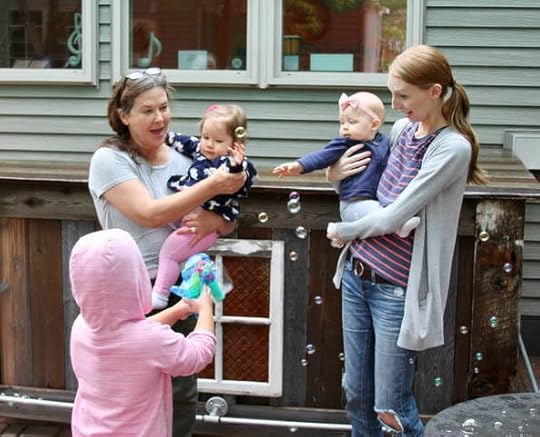
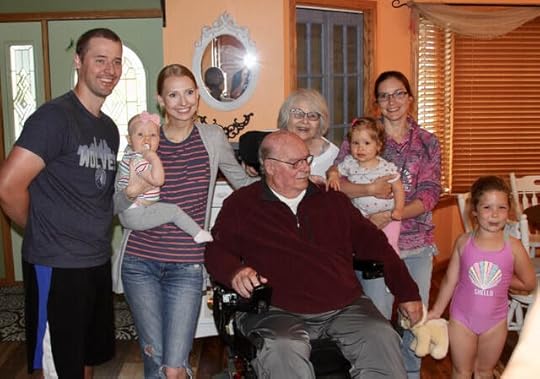

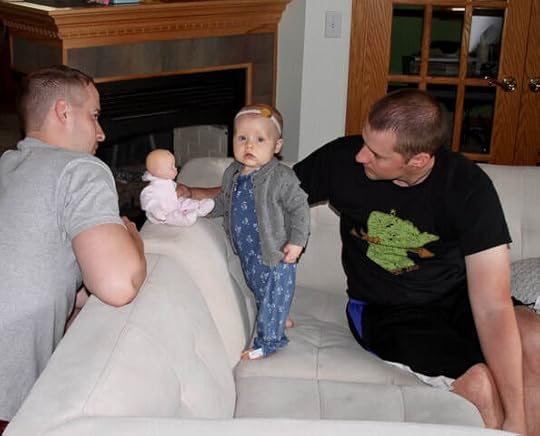
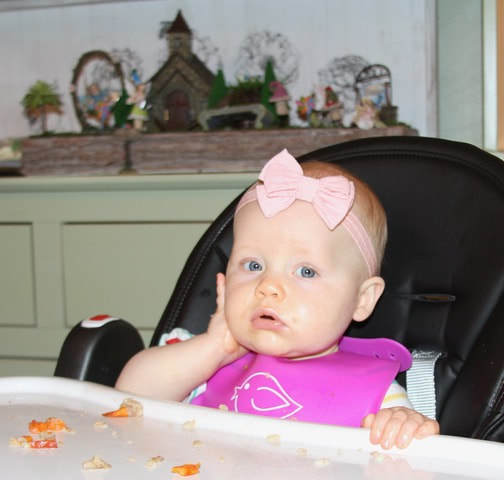



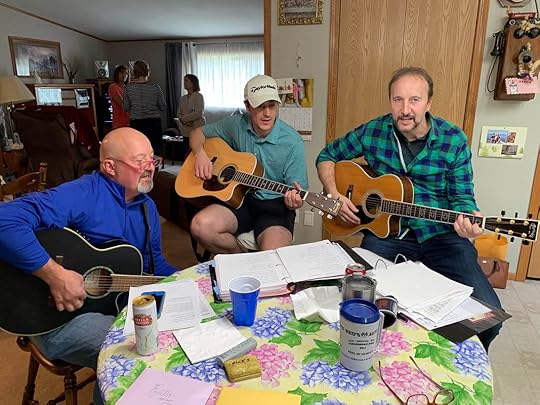

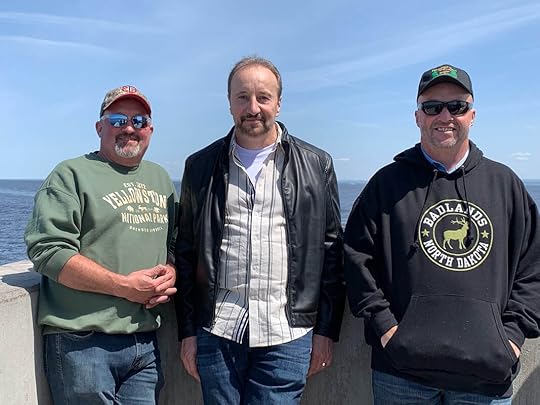

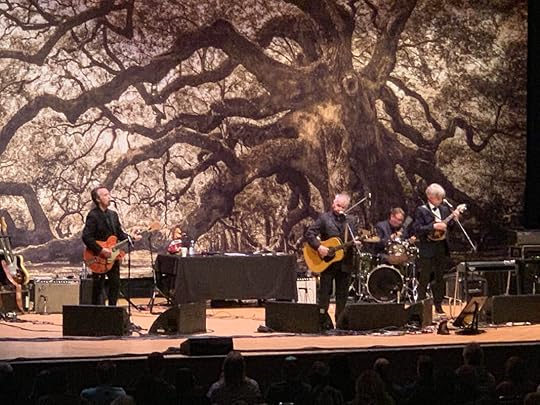 John Prine live in Duluth
John Prine live in Duluth 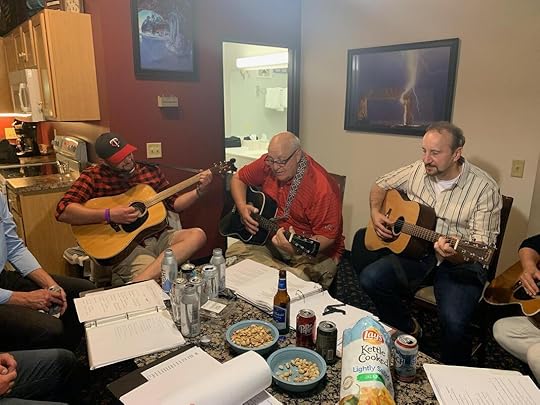
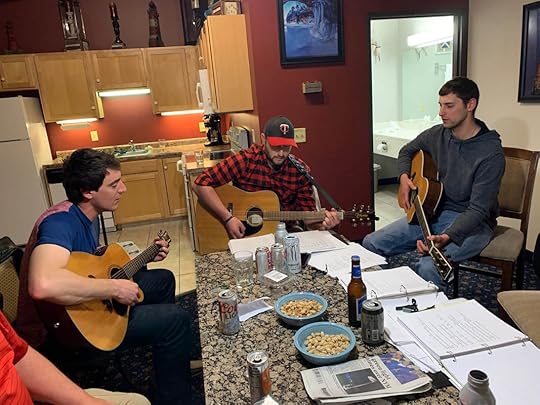
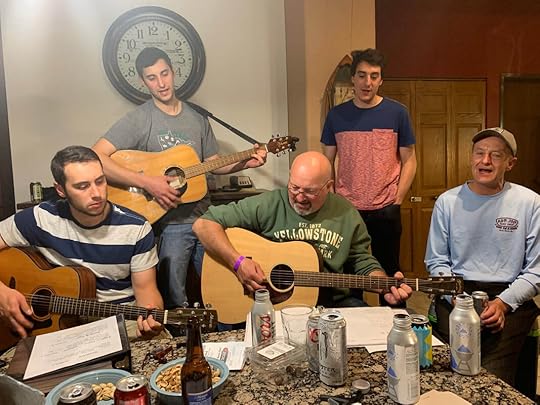
 On Sunday, June 30, 2019 I will be signing and selling books at Arts in the Park in Brainerd, Minnesota from 10:00 am – 4:00 pm. Arts in the Park is located at Gregory Park, 424 N 5th Street, Brainerd Minnesota. Background
On Sunday, June 30, 2019 I will be signing and selling books at Arts in the Park in Brainerd, Minnesota from 10:00 am – 4:00 pm. Arts in the Park is located at Gregory Park, 424 N 5th Street, Brainerd Minnesota. BackgroundThe teen killer whose crimes are outlined below came from the following background: His father was an alcoholic who physically and emotionally abused his mother, and eventually left the family. His father was later incarcerated for beating his new girlfriend to death.
As a young adolescent, before the murders, this teen killer had frequently stolen women's underwear.
CrimesIn 1990, a teenage male removed the screen from the bedroom window and began beating 13-year-old Leslie Gerhart with a brick. Leslie had a friend staying over for the evening and managed to survive the attempt on her life. It is suspected this male is the same man later sentenced to death for the following crimes. If true, her assailant was 15-years-old at the time. Joan Burghardt, a 29-year-old nurse's aide, was getting ready for bed the evening of August 9, 1992, when a young male broke into her east Allentown apartment, raped her and beat her, inflicting 37 injuries. Her killer would initially be sentenced to death, but because he was only 17 years old, the sentence would be reduced to life in prison. On August 9, he was just getting started on his rampage.
 There wasn’t another murder for 10 months. It was later discovered that between the murders of Joan Burghardt and Charlotte Schmoyer, their killer, who had now turned 18, was arrested for burglary and served eight months in prison.Charlotte Schmoyer, a 15-year-old newspaper carrier for The Morning Call was abducted, raped and stabbed in June of 1993. When a customer saw Charlotte’s newspaper cart outside her house, but no sign of Charlotte, she called the paper. When no one from The Morning Call could locate her, they called the police. Charlotte’s body was found in a wooded area nearby. She had been stabbed over 20 times. Charlotte Schmoyer was a student at Louis E. Dieruff High School.
There wasn’t another murder for 10 months. It was later discovered that between the murders of Joan Burghardt and Charlotte Schmoyer, their killer, who had now turned 18, was arrested for burglary and served eight months in prison.Charlotte Schmoyer, a 15-year-old newspaper carrier for The Morning Call was abducted, raped and stabbed in June of 1993. When a customer saw Charlotte’s newspaper cart outside her house, but no sign of Charlotte, she called the paper. When no one from The Morning Call could locate her, they called the police. Charlotte’s body was found in a wooded area nearby. She had been stabbed over 20 times. Charlotte Schmoyer was a student at Louis E. Dieruff High School.  After the murder of Charlotte Schmoyer, the killer was almost apprehended when he was pulled over for a speeding violation, but he received his speeding ticket and left.On June 28, 1993, the teen killer next broke into Denise Sam-Cali’s home. She managed to break free of his grip and ran outside. Like a scene from a horror movie, the killer managed to catch her, and pinned her on the ground. He beat her, raped her and choked her. A neighbor turned on the light and came outside, which finally scared the killer away. Jessica Jean Fortney, a 47-year-old young grandmother, was raped and strangled in her home on July 14, 1993. (pictured below) The killer didn’t know the granddaughter had witnessed part of the brutal assault and was able to give a description to the police.
After the murder of Charlotte Schmoyer, the killer was almost apprehended when he was pulled over for a speeding violation, but he received his speeding ticket and left.On June 28, 1993, the teen killer next broke into Denise Sam-Cali’s home. She managed to break free of his grip and ran outside. Like a scene from a horror movie, the killer managed to catch her, and pinned her on the ground. He beat her, raped her and choked her. A neighbor turned on the light and came outside, which finally scared the killer away. Jessica Jean Fortney, a 47-year-old young grandmother, was raped and strangled in her home on July 14, 1993. (pictured below) The killer didn’t know the granddaughter had witnessed part of the brutal assault and was able to give a description to the police.  The 18-year-old killer had a fifth victim, only 5 years of age when Harvey broke into her house. Harvey had stalked the girl’s mother for days beforehand, as he did his other victims. He intended to rape (and possibly kill) the child’s mother, but changed his mind when he saw her in bed with a boyfriend. Instead, he crept into a room shared by the 5 year old and her younger sister. He raped the 5 year old, choked her, and left her for dead.
The 18-year-old killer had a fifth victim, only 5 years of age when Harvey broke into her house. Harvey had stalked the girl’s mother for days beforehand, as he did his other victims. He intended to rape (and possibly kill) the child’s mother, but changed his mind when he saw her in bed with a boyfriend. Instead, he crept into a room shared by the 5 year old and her younger sister. He raped the 5 year old, choked her, and left her for dead.Capture
Denise Sam-Cali suspected the killer would return—knowing she could identify him. On July 18, 1993, at 4:00 a.m. her home was broken into, but the burglar escaped when the alarm went off.
The police decided to sneak an officer into the Sam-Cali home at night for two weeks. Denise and her husband would come home as usual. On the 12th night, July 31, 1993, Officer Brian Lewis heard a sound outside. Minutes later, a screen was popped off. The officer was in the dark. The killer had returned to finish the job. When Brian shouted, “Don’t move!” The killer raised his gun. A shootout erupted. Brian had a revolver, and after 6 shots his gun was empty. The killer escaped through a kitchen window, but was wounded. The police checked the hospitals in the area and within two hours they had their suspect. 18-year-old Harvey Robinson was arrested at the hospital. DNA linked Robinson to the crimes.
Harvey Robinson had a girlfriend at the time of his assaults. He had begun his murderous rampage with an assault at age 15.
Harvey Miguel Robinson (born December 6, 1974) is currently imprisoned on death row in Pennsylvania. Only 18 years old when apprehended for the crimes, he is one of the youngest serial killers in American history. He is also the first serial killer in the history of Allentown, Pennsylvania.


Background
Harvey M. Robinson was born on December 6, 1974. He grew up in a troubled family. As a child, he was known to throw tantrums. His father, Harvey Rodriguez Robinson, was an alcoholic and was physically and emotionally abusive toward his mother. His parents divorced when he was 3. Harvey Rodriguez Robinson ended up going to prison for manslaughter after beating his mistress to death. The younger Harvey idolized his father, regardless of his abusive and criminal behavior.
Before the murders, Harvey Robinson (Jr.) had frequently stolen women's underwear. From the age of 9 to 17, he was arrested numerous times for crimes including burglary and resisting arrest. School counselors determined that Harvey suffered from severe conduct disorder. He was also a known substance abuser, which added to his propensity towards impulsive aggressive behavior.
Aftermath
Robinson was sentenced to death for his crimes. As of April 2006, Robinson's execution had been stayed. He was later resentenced to life imprisonment for the murder of Joan Burghardt because he was 17 when the crime was committed. As of 2010, Robinson was to face another jury to decide the penalty for Charlotte Schmoyer. On December 14, 2012, Robinson agreed to waive his appeal rights in the Schmoyer case in exchange for a life sentence. In December 2013, the Pennsylvania Supreme Court upheld Robinson's death penalty in the Fortney murder. His current sentence is 1 death sentence, 2 life sentences, plus 97 years for rape.
Denise, Leslie, and an unnamed 5-year-old girl, are heroes for surviving the rage of a terrible, self-centered psychopath. Denise, with help from a brave police officer, Brian Lewis, captured him. Harvey Robinson has never expressed remorse. Harvey Robinson is serving his time in Graterford State Prison. This might be his most pleasant stay for the rest of eternity.
Denise Sam-Cali stated, “Harvey Robinson is nothing. Not even a grown man. He’s just nothing.”
Thanks for listening,
Frank


























 Thursday “Rock and Stroll” nights in Pierz
Thursday “Rock and Stroll” nights in Pierz 











 It was fun having the children fly in from out of state to spend a week together. My 5-year-old granddaughter told us she wanted to set up a “Nailed It” cooking competition where 3 sets of adults would need to bake a cake that looked either like a princess or an action hero, and she would go around and either offer advice, or annoy the contestants, depending on the request. We obliged her and it was very entertaining.
It was fun having the children fly in from out of state to spend a week together. My 5-year-old granddaughter told us she wanted to set up a “Nailed It” cooking competition where 3 sets of adults would need to bake a cake that looked either like a princess or an action hero, and she would go around and either offer advice, or annoy the contestants, depending on the request. We obliged her and it was very entertaining. 











 John Prine live in Duluth
John Prine live in Duluth 


Published on June 29, 2019 11:28
May 18, 2019
The sad reality of the Mohamed Noor conviction.
First of all I’d like to thank the Friends of Lake Elmo library for a wonderful reception. I am so fortunate to have the opportunity to speak to so many great people. Murder Book and The I-94 Murders continue to sell well, and I love talking about both. Thank you all! UPCOMING EVENTS:
May 24, 2019, Frank will be speaking at The Center in Brainerd on The I-94 Murders and writing True Crime mysteries in Minnesota. The presentation is open to the public. The Center is located at 803 Kingwood Street, in Brainerd, Minnesota. 12:00 pm.June 15, 2019, Frank will be signing books at Authorfest, sponsored by Beagle and Wolf Books & Bindery. Authorfest is held at the Armory at 203 Park Avenue South in Park Rapids, Minnesota.Sunday, June 30, 2019. Signing and selling books at Arts in the Park in Brainerd, Minnesota from 10:00 am – 4:00 pm. Arts in the Park is located at Gregory Park, 424 N 5th Street, Brainerd Minnesota.Sunday, July 28, 2019. Signing and selling books at Arts & Crafts in the Park in Detroit Lakes, Minnesota from 9:00 am – 4:00 pm. Arts in the Park is located at Washington Park in Detroit Lakes, Minnesota.Saturday, August 10, 2019. Signing and selling books at Art & Craft Fair in Battle Lake, Minnesota from 9:00 am – 4:00 pm at Railroad Park in Battle Lake, Minnesota. It’s time to have a conversation about justice and the Mohamed Noor conviction. A New York Times headline recently read: A Black Officer, a White Woman, a Rare Murder Conviction. Is It ‘Hypocrisy,’ or Justice? Mohamed Noor, center, was found guilty in the fatal police shooting of Justine Ruszczyk. Credit: Craig Lassig/Reuters On July 15, 2017, Justine Ruszczyk, (also known as Justine Damond), was shot and killed by Mohamed Noor, a Somali-American Minneapolis Police Department officer. Justine, a 40-year-old Australian-American yoga instructor, had called 9-1-1 to report the possible sexual assault of a woman in an alley behind her house. The location was West 55th Street alley, between Washburn and Xerxes Avenues in an area known as Fulton in south Minneapolis.
Mohamed Noor, center, was found guilty in the fatal police shooting of Justine Ruszczyk. Credit: Craig Lassig/Reuters On July 15, 2017, Justine Ruszczyk, (also known as Justine Damond), was shot and killed by Mohamed Noor, a Somali-American Minneapolis Police Department officer. Justine, a 40-year-old Australian-American yoga instructor, had called 9-1-1 to report the possible sexual assault of a woman in an alley behind her house. The location was West 55th Street alley, between Washburn and Xerxes Avenues in an area known as Fulton in south Minneapolis.
Mohamed Noor was arrested and charged with 2nd-degree manslaughter and 3rd-degree murder following an eight-month investigation by the Minnesota Bureau of Criminal Apprehension and the Hennepin County Attorney's Office. On April 30, 2019, Mohamed Noor was convicted of 3rd-degree murder and manslaughter but acquitted of intentional 2nd-degree murder. Three days later, the City of Minneapolis awarded $20 million to the family of Justine (Damond) Rusczcyk for violation of her civil rights. The shooting occurred only weeks after a high-profile manslaughter trial acquittal in the 2016 police shooting of Philando Castile in Falcon Heights, Minnesota. Philando, a 32-year-old African American, was pulled over while driving in Falcon Heights, Minnesota, and killed by Jeronimo Yanez, a St. Anthony, Minnesota Latino police officer. Philando’s family was awarded $3 million.
The shooting occurred only weeks after a high-profile manslaughter trial acquittal in the 2016 police shooting of Philando Castile in Falcon Heights, Minnesota. Philando, a 32-year-old African American, was pulled over while driving in Falcon Heights, Minnesota, and killed by Jeronimo Yanez, a St. Anthony, Minnesota Latino police officer. Philando’s family was awarded $3 million.
The shooting of Philando was clearly not justified.
Differences: Philando had a gun, but keep in mind, Philando had warned the officer he had a gun. Philando was in a vehicle with his partner, who was facing 2nd and 4th degree assault charges, but there is no indication the officer was aware of her pending charges.
Mohamed Noor reached over his partner to shoot Justine while she was approaching the squad car. He didn’t have a clear view of who he was shooting.
Similarities: Both police officers were young minority officers who were clearly frightened over the situation they were facing.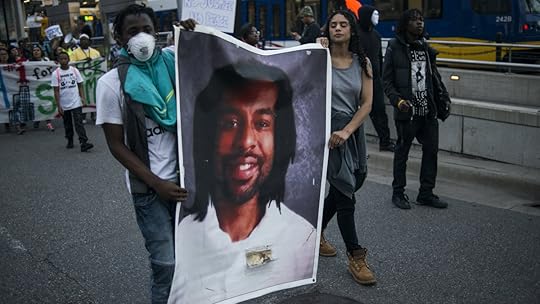 The shootings of both Philando and Justine exacerbated existing tensions and attracted national and international press.
The shootings of both Philando and Justine exacerbated existing tensions and attracted national and international press. 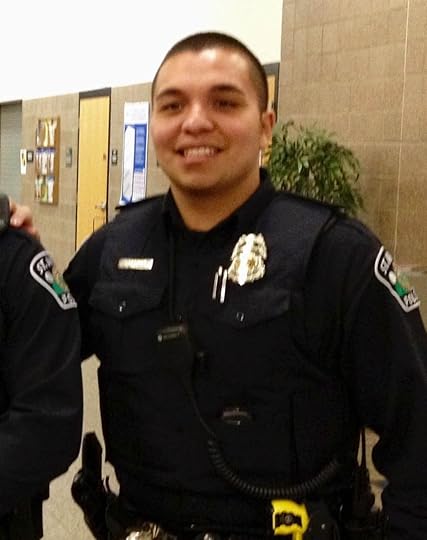 The Bureau of Criminal Apprehension has taken significant criticism over being “cop friendly” in their investigation of both shootings. The County Attorney in the Noor case was particularly upset over the BCA returning the car to circulation only a day after the shooting. When questioning Noor why he shot her, a BCA agent apparently suggested “maybe Justine struck the car.” When neither officer indicated immediately this was the case, it was assumed they had no evidence to gather from the car, so it was returned to circulation. When Noor later used the possible strike of the car during his defense, the BCA was in trouble for not having thoroughly examined the vehicle.
The Bureau of Criminal Apprehension has taken significant criticism over being “cop friendly” in their investigation of both shootings. The County Attorney in the Noor case was particularly upset over the BCA returning the car to circulation only a day after the shooting. When questioning Noor why he shot her, a BCA agent apparently suggested “maybe Justine struck the car.” When neither officer indicated immediately this was the case, it was assumed they had no evidence to gather from the car, so it was returned to circulation. When Noor later used the possible strike of the car during his defense, the BCA was in trouble for not having thoroughly examined the vehicle.
Mohamed Noor was the first Minnesota police officer convicted of murder for actions he took during the course of his work. This is a complicated mess. Mohamed came from one of the poorest countries in the world, Somalia. He is described as a caring father. Mohamed was fast-tracked as we need police officers, particularly African American police officers. He ended up in a situation he wasn’t prepared to handle. Mohamed killed a wonderful, caring woman, who was trying to stop a sexual assault.
This is how it ends:
~ Mohamed goes to prison. A child loses a father.
~ Jeronimo Yanez has no charges and his shooting of Philando is considered justified.
~Philando’s family and community loses a wonderful person.
~ Justine’s family and community loses a wonderful person.
~Taxpayers are asked to dole out $20 million to Justine’s family. Money that could have been used to help the 6000 homeless children in Minnesota. Where is this money coming from? The wealthy are paying a lower % of their income in taxes than the middle class and working class, so it’s coming from the very communities harmed most by the shooting.
~ People are legitimately asking, is Justine Ruszczyk worth 10X as much as Philando Castile? Philando’s family received $2 million, and $1 million went to the attorneys.
~There’s no indication that the sexual assault Justine called in was investigated.
Opportunities for learning:
~The BCA needs to do a better job investigating police shootings. The police appeared in unison in not testifying against Mohamed. We need police to stand forth with the truth, right or wrong. I don’t believe Mohamed is a terrible person. Mohamed made a terrible mistake.
~We need to improve the relationship between the police and the communities. The number of police shootings in the U.S. has remained constant for 5 years, and I see no change unless the police and communities can begin working together.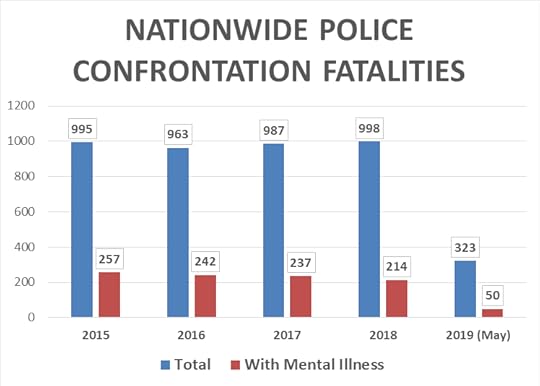 I see the next officer involved in a shooting easily railroaded, so the powers to be can say they’re not racist. I don’t see that result, or protests, or monetary awards having much of an impact. The solution is to get the police to work with communities and to get communities to work with the police.
I see the next officer involved in a shooting easily railroaded, so the powers to be can say they’re not racist. I don’t see that result, or protests, or monetary awards having much of an impact. The solution is to get the police to work with communities and to get communities to work with the police.
Thank for listening,
Frank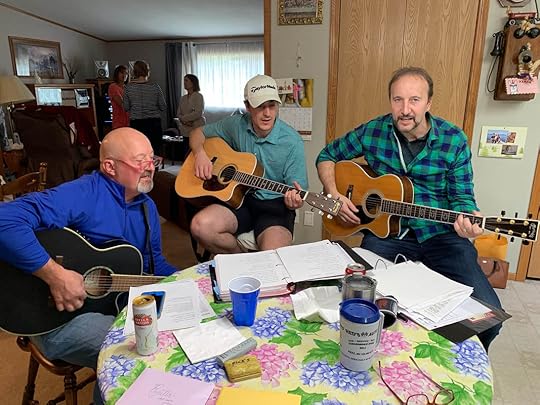 Scotty Stocco was the very entertaining host of the 2019 Minced (The fine version of chopped) held at Sprout in Little Falls.
Scotty Stocco was the very entertaining host of the 2019 Minced (The fine version of chopped) held at Sprout in Little Falls. 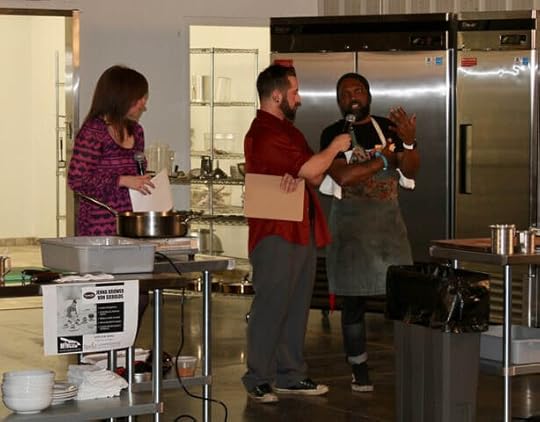
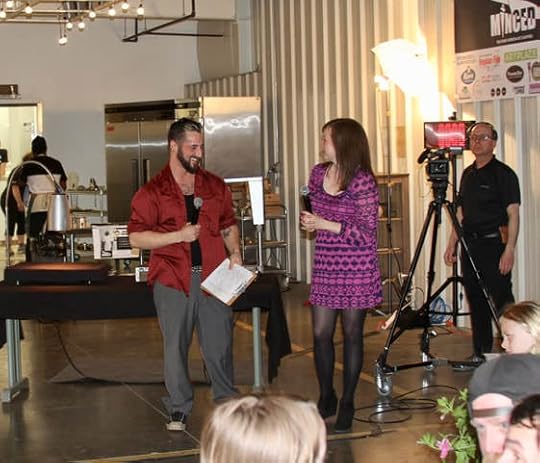













May 24, 2019, Frank will be speaking at The Center in Brainerd on The I-94 Murders and writing True Crime mysteries in Minnesota. The presentation is open to the public. The Center is located at 803 Kingwood Street, in Brainerd, Minnesota. 12:00 pm.June 15, 2019, Frank will be signing books at Authorfest, sponsored by Beagle and Wolf Books & Bindery. Authorfest is held at the Armory at 203 Park Avenue South in Park Rapids, Minnesota.Sunday, June 30, 2019. Signing and selling books at Arts in the Park in Brainerd, Minnesota from 10:00 am – 4:00 pm. Arts in the Park is located at Gregory Park, 424 N 5th Street, Brainerd Minnesota.Sunday, July 28, 2019. Signing and selling books at Arts & Crafts in the Park in Detroit Lakes, Minnesota from 9:00 am – 4:00 pm. Arts in the Park is located at Washington Park in Detroit Lakes, Minnesota.Saturday, August 10, 2019. Signing and selling books at Art & Craft Fair in Battle Lake, Minnesota from 9:00 am – 4:00 pm at Railroad Park in Battle Lake, Minnesota. It’s time to have a conversation about justice and the Mohamed Noor conviction. A New York Times headline recently read: A Black Officer, a White Woman, a Rare Murder Conviction. Is It ‘Hypocrisy,’ or Justice?
 Mohamed Noor, center, was found guilty in the fatal police shooting of Justine Ruszczyk. Credit: Craig Lassig/Reuters On July 15, 2017, Justine Ruszczyk, (also known as Justine Damond), was shot and killed by Mohamed Noor, a Somali-American Minneapolis Police Department officer. Justine, a 40-year-old Australian-American yoga instructor, had called 9-1-1 to report the possible sexual assault of a woman in an alley behind her house. The location was West 55th Street alley, between Washburn and Xerxes Avenues in an area known as Fulton in south Minneapolis.
Mohamed Noor, center, was found guilty in the fatal police shooting of Justine Ruszczyk. Credit: Craig Lassig/Reuters On July 15, 2017, Justine Ruszczyk, (also known as Justine Damond), was shot and killed by Mohamed Noor, a Somali-American Minneapolis Police Department officer. Justine, a 40-year-old Australian-American yoga instructor, had called 9-1-1 to report the possible sexual assault of a woman in an alley behind her house. The location was West 55th Street alley, between Washburn and Xerxes Avenues in an area known as Fulton in south Minneapolis. Mohamed Noor was arrested and charged with 2nd-degree manslaughter and 3rd-degree murder following an eight-month investigation by the Minnesota Bureau of Criminal Apprehension and the Hennepin County Attorney's Office. On April 30, 2019, Mohamed Noor was convicted of 3rd-degree murder and manslaughter but acquitted of intentional 2nd-degree murder. Three days later, the City of Minneapolis awarded $20 million to the family of Justine (Damond) Rusczcyk for violation of her civil rights.
 The shooting occurred only weeks after a high-profile manslaughter trial acquittal in the 2016 police shooting of Philando Castile in Falcon Heights, Minnesota. Philando, a 32-year-old African American, was pulled over while driving in Falcon Heights, Minnesota, and killed by Jeronimo Yanez, a St. Anthony, Minnesota Latino police officer. Philando’s family was awarded $3 million.
The shooting occurred only weeks after a high-profile manslaughter trial acquittal in the 2016 police shooting of Philando Castile in Falcon Heights, Minnesota. Philando, a 32-year-old African American, was pulled over while driving in Falcon Heights, Minnesota, and killed by Jeronimo Yanez, a St. Anthony, Minnesota Latino police officer. Philando’s family was awarded $3 million.The shooting of Philando was clearly not justified.
Differences: Philando had a gun, but keep in mind, Philando had warned the officer he had a gun. Philando was in a vehicle with his partner, who was facing 2nd and 4th degree assault charges, but there is no indication the officer was aware of her pending charges.
Mohamed Noor reached over his partner to shoot Justine while she was approaching the squad car. He didn’t have a clear view of who he was shooting.
Similarities: Both police officers were young minority officers who were clearly frightened over the situation they were facing.
 The shootings of both Philando and Justine exacerbated existing tensions and attracted national and international press.
The shootings of both Philando and Justine exacerbated existing tensions and attracted national and international press.  The Bureau of Criminal Apprehension has taken significant criticism over being “cop friendly” in their investigation of both shootings. The County Attorney in the Noor case was particularly upset over the BCA returning the car to circulation only a day after the shooting. When questioning Noor why he shot her, a BCA agent apparently suggested “maybe Justine struck the car.” When neither officer indicated immediately this was the case, it was assumed they had no evidence to gather from the car, so it was returned to circulation. When Noor later used the possible strike of the car during his defense, the BCA was in trouble for not having thoroughly examined the vehicle.
The Bureau of Criminal Apprehension has taken significant criticism over being “cop friendly” in their investigation of both shootings. The County Attorney in the Noor case was particularly upset over the BCA returning the car to circulation only a day after the shooting. When questioning Noor why he shot her, a BCA agent apparently suggested “maybe Justine struck the car.” When neither officer indicated immediately this was the case, it was assumed they had no evidence to gather from the car, so it was returned to circulation. When Noor later used the possible strike of the car during his defense, the BCA was in trouble for not having thoroughly examined the vehicle. Mohamed Noor was the first Minnesota police officer convicted of murder for actions he took during the course of his work. This is a complicated mess. Mohamed came from one of the poorest countries in the world, Somalia. He is described as a caring father. Mohamed was fast-tracked as we need police officers, particularly African American police officers. He ended up in a situation he wasn’t prepared to handle. Mohamed killed a wonderful, caring woman, who was trying to stop a sexual assault.
This is how it ends:
~ Mohamed goes to prison. A child loses a father.
~ Jeronimo Yanez has no charges and his shooting of Philando is considered justified.
~Philando’s family and community loses a wonderful person.
~ Justine’s family and community loses a wonderful person.
~Taxpayers are asked to dole out $20 million to Justine’s family. Money that could have been used to help the 6000 homeless children in Minnesota. Where is this money coming from? The wealthy are paying a lower % of their income in taxes than the middle class and working class, so it’s coming from the very communities harmed most by the shooting.
~ People are legitimately asking, is Justine Ruszczyk worth 10X as much as Philando Castile? Philando’s family received $2 million, and $1 million went to the attorneys.
~There’s no indication that the sexual assault Justine called in was investigated.
Opportunities for learning:
~The BCA needs to do a better job investigating police shootings. The police appeared in unison in not testifying against Mohamed. We need police to stand forth with the truth, right or wrong. I don’t believe Mohamed is a terrible person. Mohamed made a terrible mistake.
~We need to improve the relationship between the police and the communities. The number of police shootings in the U.S. has remained constant for 5 years, and I see no change unless the police and communities can begin working together.
 I see the next officer involved in a shooting easily railroaded, so the powers to be can say they’re not racist. I don’t see that result, or protests, or monetary awards having much of an impact. The solution is to get the police to work with communities and to get communities to work with the police.
I see the next officer involved in a shooting easily railroaded, so the powers to be can say they’re not racist. I don’t see that result, or protests, or monetary awards having much of an impact. The solution is to get the police to work with communities and to get communities to work with the police. Thank for listening,
Frank
 Scotty Stocco was the very entertaining host of the 2019 Minced (The fine version of chopped) held at Sprout in Little Falls.
Scotty Stocco was the very entertaining host of the 2019 Minced (The fine version of chopped) held at Sprout in Little Falls. 














Published on May 18, 2019 13:14
May 5, 2019
Thank you Beaver Island Brewery!
I went through Lake Elmo, on Thursday to drop off a banner at the Lake Elmo library for my Tuesday, May 7, presentation. The library was closed, but there was a State Farm office next door, and the staff offered to deliver my poster to the library when it opened. I guess I can say, “Like a good neighbor, State Farm was there."
May 7, 2019, presentation on The I-94 Murders at the Lake Elmo library in Washington County located at 3537 Lake Elmo Avenue North, Lake Elmo, Minnesota. 6:30 pm.May 9, 2019. Frank will be providing an all-day training to licensed law enforcement officers on Addressing Mental Illness Effectively from 8:00-4:30 p.m. at Central Lakes College sponsored by the Criminal Justice program at CLC.May 24, 2019, Frank will be speaking at The Center in Brainerd on The I-94 Murders and writing True Crime mysteries in Minnesota. The presentation is open to the public. The Center is located at 803 Kingwood Street, in Brainerd, Minnesota. 12:00 pm. Addressing The I-94 Murders at the Beaver Island Brewing Company was a huge success! All the seats were full, plus some standing. A great time was had by all. Thank you everyone!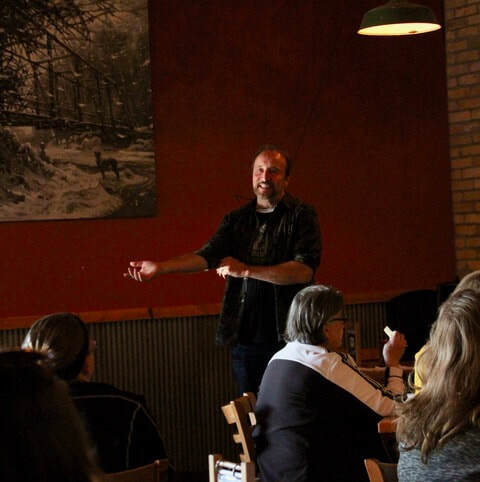
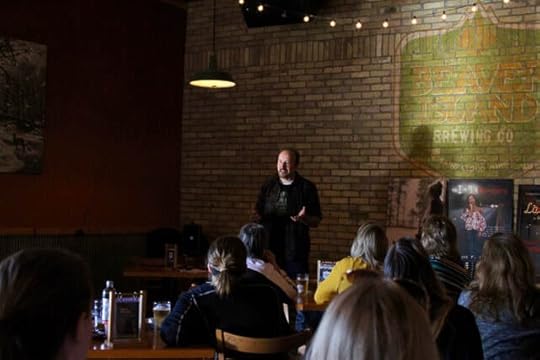
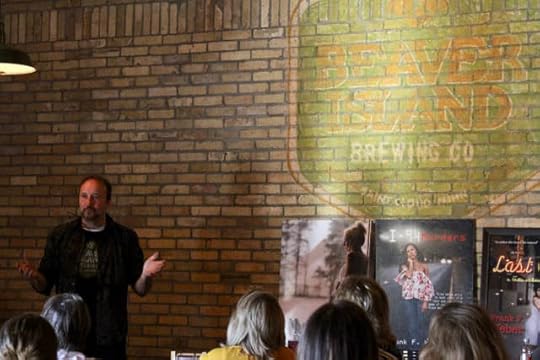 The Beaver Island Brewing Company event was amazing! The seats were full, and people were standing. The beverages were cold and everyone had a great time. Thank you! A special thanks to Mike & Deb, Paula and Roberta, for helping me pack up after the big event. And of course, thank you Beaver Island for being great!
The Beaver Island Brewing Company event was amazing! The seats were full, and people were standing. The beverages were cold and everyone had a great time. Thank you! A special thanks to Mike & Deb, Paula and Roberta, for helping me pack up after the big event. And of course, thank you Beaver Island for being great!
I am presenting on addressing mental illness to police officers on Thursday at Central Lakes College. I’m looking forward to sharing some insight about this. I want to talk about a little about Sherry Leighty. Domestic abuse cases are the most dangerous situations police officers enter.
Sherry Jean Leighty was born on September 30, 1976 in Altoona, Pennsylvania. She was the third of four children. Her older sister, Shelly Nagle, was instrumental to her missing person investigation. Sherry’s mother left the family when she was just 5 years old, all of the Dumm children were raised by their father, Sheldon. He worked at a bakery in town.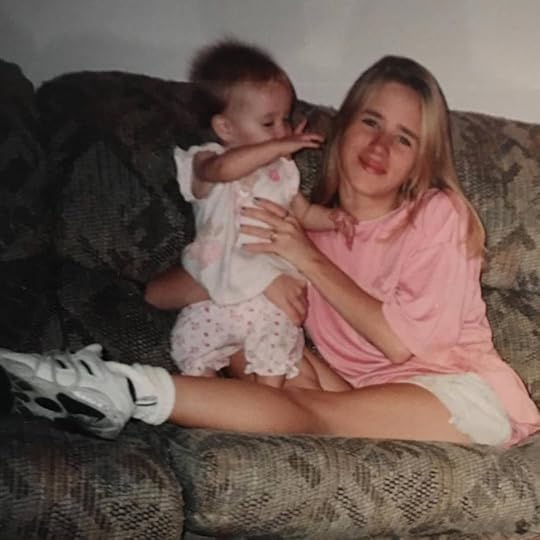 Sherry started dating Aaron Leighty when she was just 14 and Aaron was 17. At 16, she had her son, Travis, and then had two more children with Aaron, both girls, named Kieran and Rachel, respectively. At 19, Sherry and Aaron were married and had 3 children. They lived in an inexpensive rental apartment with their young family. The couple was initially inseparable and constantly doted on each other and their children. Over time Aaron became verbally abusive to her and once he started working as an over the road truckdriver became cruelly jealous. He began to accuse Sherry of cheating on him.
Sherry started dating Aaron Leighty when she was just 14 and Aaron was 17. At 16, she had her son, Travis, and then had two more children with Aaron, both girls, named Kieran and Rachel, respectively. At 19, Sherry and Aaron were married and had 3 children. They lived in an inexpensive rental apartment with their young family. The couple was initially inseparable and constantly doted on each other and their children. Over time Aaron became verbally abusive to her and once he started working as an over the road truckdriver became cruelly jealous. He began to accuse Sherry of cheating on him.
One day, Sherry called her sister Shelly and told her that she and Aaron had gotten into a very bad argument and that she needed to get out of the house. Shelly advised her sister to take the kids and find somewhere else to live. Sherry’s father was dying, her mother wasn’t in the picture, and Sherry didn’t have any money, so she moved in with her in-laws. Sherry Leighty disappeared shortly after this, in 1999. Her husband, Aaron, believed she had left with a new boyfriend. The police accepted this story, even though Sherry’s siblings didn’t believe Sherry would ever abandon her children. Finally, 13 years later, an investigation was opened up into her disappearance. When investigators reviewed the day of Sherry’s disappearance, they realized that she was last seen by her husband’s father Ken, who drove her to town, when he went to work. But Ken never went to work that day.
Sherry’s son, Travis, began looking for her, which infuriated Travis’ paternal grandfather, Kenneth Leighty. Her ex-husband, Aaron, agreed to have a phone call with his father Ken, recorded. When Aaron confronted his father over his estranged wife’s disappearance, his father responded, “It was an accident.” When Ken was interviewed by police, he attacked the officer. During Ken’s incarceration he reported that he pushed Sherry and she hit her head on the rearview mirror. Ken stated he was angry that she was dating someone other than his son. But Ken was an abusive jerk who intimidated everyone in the family. There were reports that Ken was fascinated with his son’s wife, Sherry, and Ken was caught looking in her windows, and sneaking into her bedroom when she was sleeping and lifting the covers.
Ken Leighty was offered a plea to Murder in the 3rd degree if he produced Sherry’s body. Ken led them to her body, which he had buried on his land. Her skull had been crushed with a hard object. Investigators believe that Ken likely tried to sexually assault her, and when she resisited he beat her to death. As a result of his plea deal, Ken received a sentence of 7 to 14 years and will be eligible for parole in 2020.
It is stories like Sherry’s that emphasize the importance of helping out people who struggle and demonstrating love to those close. She was a poor kid who had nowhere to go. Pictured below is Sherry (on the far right) months before her death, with her older sister and 3 children.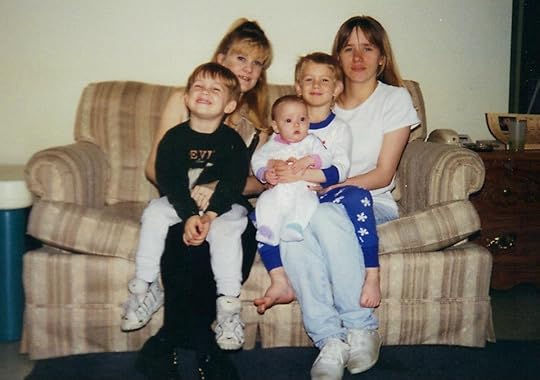 The movie Inside/Out is a great movie to help youth understand how emotions work. My 5-year-old granddaughter explained to me that she was upset because “anger was in the headquarters” which is an understanding taken from this movie. Here’s a voiced over summary of the movie.
The movie Inside/Out is a great movie to help youth understand how emotions work. My 5-year-old granddaughter explained to me that she was upset because “anger was in the headquarters” which is an understanding taken from this movie. Here’s a voiced over summary of the movie.
Thanks for listening,
Frank The Midwest Book Awards offers award to books printed in 12 midwestern states, including Illinois, Indiana, Iowa, Kansas, Michigan, Minnesota, Missouri, Nebraska, North Dakota, Ohio, South Dakota and Wisconsin, The I-94 Murders was selected as “Best Romance” of 2018. Here is Frank receiving the award.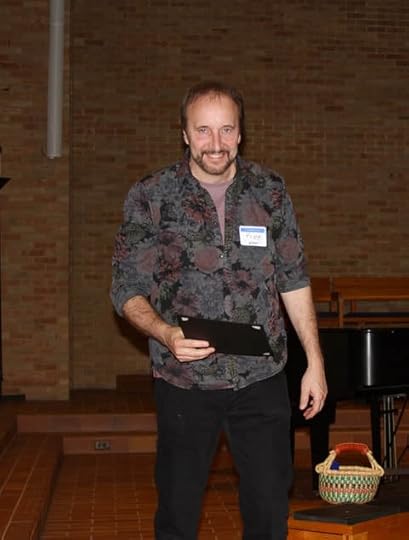
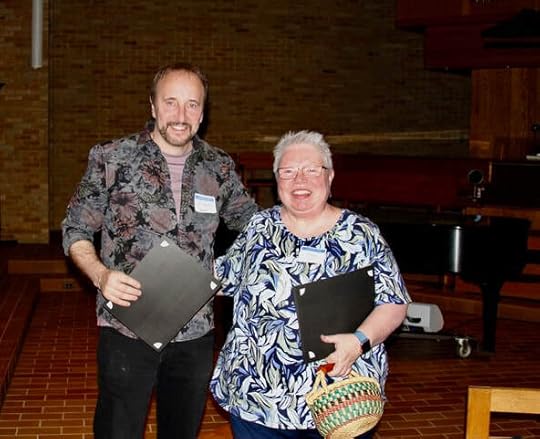
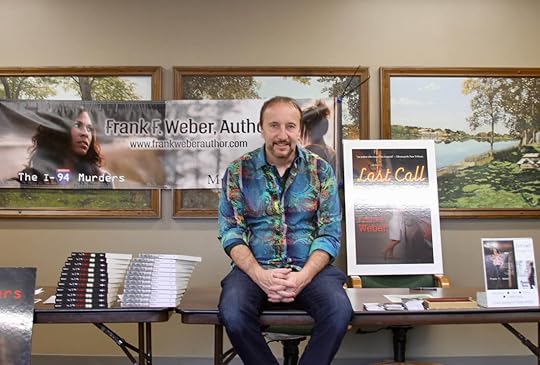 I enjoy living in a community that has “drive your tractor to school day.” I also respect the wonderful people who test their skills in various endeavors.
I enjoy living in a community that has “drive your tractor to school day.” I also respect the wonderful people who test their skills in various endeavors. 




























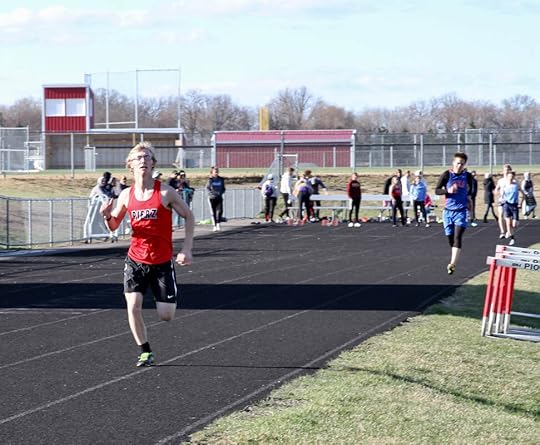









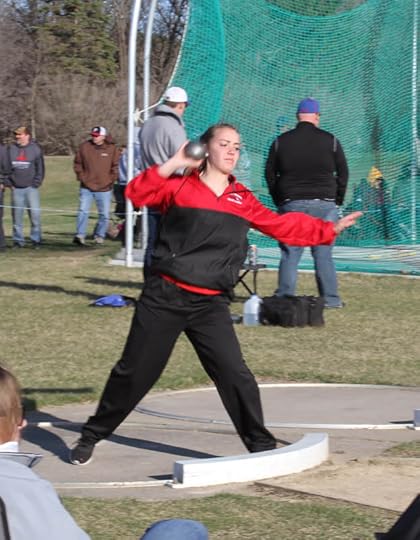















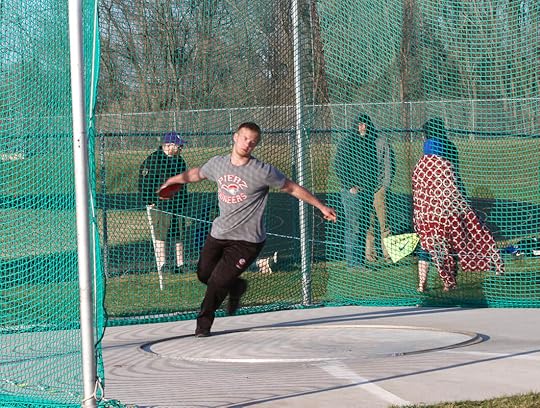




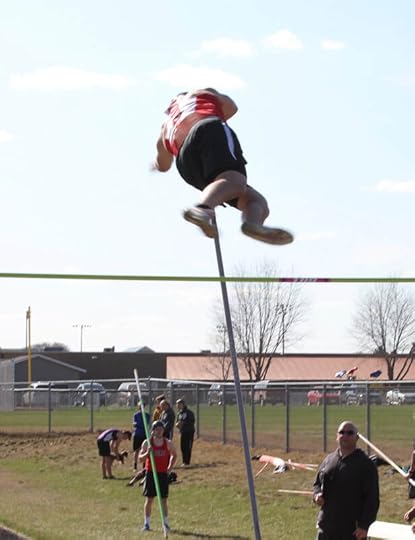


May 7, 2019, presentation on The I-94 Murders at the Lake Elmo library in Washington County located at 3537 Lake Elmo Avenue North, Lake Elmo, Minnesota. 6:30 pm.May 9, 2019. Frank will be providing an all-day training to licensed law enforcement officers on Addressing Mental Illness Effectively from 8:00-4:30 p.m. at Central Lakes College sponsored by the Criminal Justice program at CLC.May 24, 2019, Frank will be speaking at The Center in Brainerd on The I-94 Murders and writing True Crime mysteries in Minnesota. The presentation is open to the public. The Center is located at 803 Kingwood Street, in Brainerd, Minnesota. 12:00 pm. Addressing The I-94 Murders at the Beaver Island Brewing Company was a huge success! All the seats were full, plus some standing. A great time was had by all. Thank you everyone!


 The Beaver Island Brewing Company event was amazing! The seats were full, and people were standing. The beverages were cold and everyone had a great time. Thank you! A special thanks to Mike & Deb, Paula and Roberta, for helping me pack up after the big event. And of course, thank you Beaver Island for being great!
The Beaver Island Brewing Company event was amazing! The seats were full, and people were standing. The beverages were cold and everyone had a great time. Thank you! A special thanks to Mike & Deb, Paula and Roberta, for helping me pack up after the big event. And of course, thank you Beaver Island for being great!I am presenting on addressing mental illness to police officers on Thursday at Central Lakes College. I’m looking forward to sharing some insight about this. I want to talk about a little about Sherry Leighty. Domestic abuse cases are the most dangerous situations police officers enter.
Sherry Jean Leighty was born on September 30, 1976 in Altoona, Pennsylvania. She was the third of four children. Her older sister, Shelly Nagle, was instrumental to her missing person investigation. Sherry’s mother left the family when she was just 5 years old, all of the Dumm children were raised by their father, Sheldon. He worked at a bakery in town.
 Sherry started dating Aaron Leighty when she was just 14 and Aaron was 17. At 16, she had her son, Travis, and then had two more children with Aaron, both girls, named Kieran and Rachel, respectively. At 19, Sherry and Aaron were married and had 3 children. They lived in an inexpensive rental apartment with their young family. The couple was initially inseparable and constantly doted on each other and their children. Over time Aaron became verbally abusive to her and once he started working as an over the road truckdriver became cruelly jealous. He began to accuse Sherry of cheating on him.
Sherry started dating Aaron Leighty when she was just 14 and Aaron was 17. At 16, she had her son, Travis, and then had two more children with Aaron, both girls, named Kieran and Rachel, respectively. At 19, Sherry and Aaron were married and had 3 children. They lived in an inexpensive rental apartment with their young family. The couple was initially inseparable and constantly doted on each other and their children. Over time Aaron became verbally abusive to her and once he started working as an over the road truckdriver became cruelly jealous. He began to accuse Sherry of cheating on him.
One day, Sherry called her sister Shelly and told her that she and Aaron had gotten into a very bad argument and that she needed to get out of the house. Shelly advised her sister to take the kids and find somewhere else to live. Sherry’s father was dying, her mother wasn’t in the picture, and Sherry didn’t have any money, so she moved in with her in-laws. Sherry Leighty disappeared shortly after this, in 1999. Her husband, Aaron, believed she had left with a new boyfriend. The police accepted this story, even though Sherry’s siblings didn’t believe Sherry would ever abandon her children. Finally, 13 years later, an investigation was opened up into her disappearance. When investigators reviewed the day of Sherry’s disappearance, they realized that she was last seen by her husband’s father Ken, who drove her to town, when he went to work. But Ken never went to work that day.
Sherry’s son, Travis, began looking for her, which infuriated Travis’ paternal grandfather, Kenneth Leighty. Her ex-husband, Aaron, agreed to have a phone call with his father Ken, recorded. When Aaron confronted his father over his estranged wife’s disappearance, his father responded, “It was an accident.” When Ken was interviewed by police, he attacked the officer. During Ken’s incarceration he reported that he pushed Sherry and she hit her head on the rearview mirror. Ken stated he was angry that she was dating someone other than his son. But Ken was an abusive jerk who intimidated everyone in the family. There were reports that Ken was fascinated with his son’s wife, Sherry, and Ken was caught looking in her windows, and sneaking into her bedroom when she was sleeping and lifting the covers.
Ken Leighty was offered a plea to Murder in the 3rd degree if he produced Sherry’s body. Ken led them to her body, which he had buried on his land. Her skull had been crushed with a hard object. Investigators believe that Ken likely tried to sexually assault her, and when she resisited he beat her to death. As a result of his plea deal, Ken received a sentence of 7 to 14 years and will be eligible for parole in 2020.
It is stories like Sherry’s that emphasize the importance of helping out people who struggle and demonstrating love to those close. She was a poor kid who had nowhere to go. Pictured below is Sherry (on the far right) months before her death, with her older sister and 3 children.
 The movie Inside/Out is a great movie to help youth understand how emotions work. My 5-year-old granddaughter explained to me that she was upset because “anger was in the headquarters” which is an understanding taken from this movie. Here’s a voiced over summary of the movie.
The movie Inside/Out is a great movie to help youth understand how emotions work. My 5-year-old granddaughter explained to me that she was upset because “anger was in the headquarters” which is an understanding taken from this movie. Here’s a voiced over summary of the movie. Thanks for listening,
Frank The Midwest Book Awards offers award to books printed in 12 midwestern states, including Illinois, Indiana, Iowa, Kansas, Michigan, Minnesota, Missouri, Nebraska, North Dakota, Ohio, South Dakota and Wisconsin, The I-94 Murders was selected as “Best Romance” of 2018. Here is Frank receiving the award.


 I enjoy living in a community that has “drive your tractor to school day.” I also respect the wonderful people who test their skills in various endeavors.
I enjoy living in a community that has “drive your tractor to school day.” I also respect the wonderful people who test their skills in various endeavors. 






























































Published on May 05, 2019 17:57
April 19, 2019
The I-94 Murders selected Best New Romance of 2018.
 Upcoming Events:
Upcoming Events: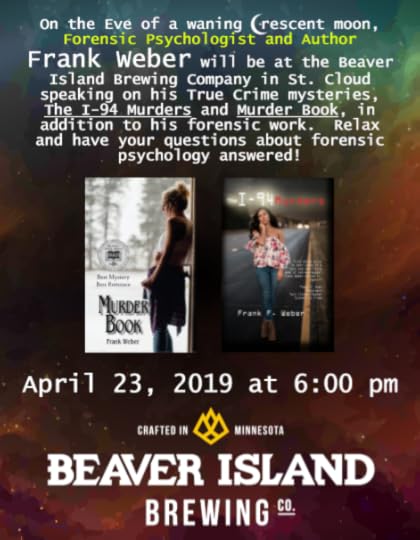 Frank will be speaking on The I-94 Murders at the Ortonville and Graceville Public libraries on Saturday, April 27, 2019. Frank will speak at the Graceville Public Library at 10:30 a.m. located at 415 Studdart Ave, Graceville, Minnesota. Frank will then speak at the Ortonville Public Library at 2:00 p.m., located at 412 2nd St NW, Ortonville, Minnesota.May 7, 2019, presentation on The I-94 Murders at the Lake Elmo Library in Washington County located at 3537 Lake Elmo Avenue North, Lake Elmo, Minnesota. 6:30 p.m.May 24, 2019, Frank will be speaking at The Center in Brainerd on The I-94 Murders and writing True Crime mysteries in Minnesota. The presentation is open to the public. The Center is located at 803 Kingwood Street, in Brainerd, Minnesota. 12:00 p.m. There are many ways people give to communities and I’m thankful to know so many wonderfully kind people. I am writing a college Human Development textbook that I plan on giving my students free access to online and giving away at cost for people who want hard copies. I simply got fed up that the text I was using cost $250 a book. At a community college there are many students who can’t afford to pay for their text until their financial aid comes in, which is often a couple weeks into the semester. I also want to address current issues that texts aren’t addressing such as vaping, sexting, consent, pornography and development of healthy intimacy. Here is a section from Chapter 7 (Adolescence) of the text:
Frank will be speaking on The I-94 Murders at the Ortonville and Graceville Public libraries on Saturday, April 27, 2019. Frank will speak at the Graceville Public Library at 10:30 a.m. located at 415 Studdart Ave, Graceville, Minnesota. Frank will then speak at the Ortonville Public Library at 2:00 p.m., located at 412 2nd St NW, Ortonville, Minnesota.May 7, 2019, presentation on The I-94 Murders at the Lake Elmo Library in Washington County located at 3537 Lake Elmo Avenue North, Lake Elmo, Minnesota. 6:30 p.m.May 24, 2019, Frank will be speaking at The Center in Brainerd on The I-94 Murders and writing True Crime mysteries in Minnesota. The presentation is open to the public. The Center is located at 803 Kingwood Street, in Brainerd, Minnesota. 12:00 p.m. There are many ways people give to communities and I’m thankful to know so many wonderfully kind people. I am writing a college Human Development textbook that I plan on giving my students free access to online and giving away at cost for people who want hard copies. I simply got fed up that the text I was using cost $250 a book. At a community college there are many students who can’t afford to pay for their text until their financial aid comes in, which is often a couple weeks into the semester. I also want to address current issues that texts aren’t addressing such as vaping, sexting, consent, pornography and development of healthy intimacy. Here is a section from Chapter 7 (Adolescence) of the text:Statutory Rape = Sexual behavior that is consenting, but by statute (age) is illegal.
The age of consent for sex in Minnesota is 16. This means that a 16-year-old is old enough to consent to a sexual relationship. This doesn’t mean that you should engage in a sexual relationship at 16. It simply means you won’t get into legal trouble if your partner is consenting and at least 16. If a person is under 16 years of age, they will not be in legal trouble if they are within 2 years of age. For example: A 17-year-old will not be in legal trouble for sexual behavior with a 15-year-old if the behavior is consenting and they are within 24 months of age of each other.
With all of this said, make love matter! Sexual behavior can be a beautiful way two lovers express their affection for each other. Sex doesn’t create intimacy. The intimacy needs to be present first. Sex outside of this context is basically shared masturbation. People who are great at intimacy do not have a lot of sexual partners. Make your sexual behavior meaningful!
How do you learn intimacy? First be a good friend to someone, and then take those friendship skills into a relationship.
 Sexting = Sending someone a naked picture over a phone or the internet. It is illegal to possess a naked picture of someone under the age of 18. (Obviously we are not talking about baby pictures.) If a 16-year-old sends a picture of her bare breasts or bare genital area to her same age boyfriend both she and her boyfriend can be charged with Possession of Child Pornography. The same charge is applied if he sends a picture of his bare genital area. Keep in mind, if you’re in college you will be applying for jobs that do background checks. It may be difficult to get an interview with a child pornography charge in your history. More importantly, there is much to be said for modesty.
Sexting = Sending someone a naked picture over a phone or the internet. It is illegal to possess a naked picture of someone under the age of 18. (Obviously we are not talking about baby pictures.) If a 16-year-old sends a picture of her bare breasts or bare genital area to her same age boyfriend both she and her boyfriend can be charged with Possession of Child Pornography. The same charge is applied if he sends a picture of his bare genital area. Keep in mind, if you’re in college you will be applying for jobs that do background checks. It may be difficult to get an interview with a child pornography charge in your history. More importantly, there is much to be said for modesty.Pornography = printed or visual material containing the explicit description or display of nudity or sexual activity, intended to stimulate erotic, rather than aesthetic or emotional feelings.
Pornography is alluring. If there wasn’t an attraction, millions of people wouldn’t use it. But keep in mind, just because something is alluring, doesn’t mean it’s good for you. Methamphetamine is alluring and makes people feel good momentarily also, but it also destroys lives. Rats have a similar limbic system to humans. When rats are taught to push a bar to receive the same stimulation in their hypothalamus that humans receive when they access pornography, the rats push the bar until they’re dead. They don’t eat or drink water. They just keep pushing the bar. I have to believe a life means more than just reacting to arousal. There is a site called, Fight the New Drug, that gives details of how accessing pornography damages relationship. Imagine the betrayal a partner feels when she, he, or they finds out the person they care about needs to look at someone else for arousal. Accessing porn makes you less caring about people and more focused on stimuli. In addition, it eats up time you could have used to be a better partner, friend, musician, etc.

 Accessing pornography can become addicting. Addictions develop by using a stimuli (porn or a drug) in response to an emotion. They are overcome by committing to another behavior every time that emotion occurs. Neural paths used, become stronger. This is how addictions develop. When you start using paths, other than the addiction, your resistance becomes stronger. Recognizing the prevalence of this issue, I wrote a treatment workbook to help individuals titled, The Guide to Addressing Sexual Obsessions, that can be used to overcome a sexual addiction. It can be purchased at CORE Professional Services by calling (320) 202-1400.
Accessing pornography can become addicting. Addictions develop by using a stimuli (porn or a drug) in response to an emotion. They are overcome by committing to another behavior every time that emotion occurs. Neural paths used, become stronger. This is how addictions develop. When you start using paths, other than the addiction, your resistance becomes stronger. Recognizing the prevalence of this issue, I wrote a treatment workbook to help individuals titled, The Guide to Addressing Sexual Obsessions, that can be used to overcome a sexual addiction. It can be purchased at CORE Professional Services by calling (320) 202-1400.Porn creep = When an individual is no longer able to become aroused by normal sexual activity as a result of accessing excessive amounts of pornography.
The reason most of the adults involved in pornography are barely 18 (if they are indeed adults) is because the industry looks for vulnerable people who haven’t clearly established an identity. Almost half of all sex workers, including prostitutes in Minnesota, are under the age of 18. If you believe there is no relation between pornography and sex trafficking you are deluding yourself.
 Nearly 400 children have been rescued and 348 adults arrested following an international child pornography investigation in Canada in 2013. The three-year undercover project was set in motion by Toronto police officers after they discovered a man had been sharing “very graphic images” of child sexual abuse. What they eventually found was a full blown child porn production and distribution company in Toronto that was distributing content online to people across the world.
Nearly 400 children have been rescued and 348 adults arrested following an international child pornography investigation in Canada in 2013. The three-year undercover project was set in motion by Toronto police officers after they discovered a man had been sharing “very graphic images” of child sexual abuse. What they eventually found was a full blown child porn production and distribution company in Toronto that was distributing content online to people across the world.
Revenge pornography and deep fakes are illegal, damage families, and have driven people to suicide. Consider the narcissism, or self-centeredness, that must be present in a person who would publicly destroy another person.
Deep fakes = Using technology to place a photo of someone else’s face on a naked body.
Revenge porn = Sexually explicit images or videos of a person posted on the Internet, (typically by a former sexual partner), without the consent of the subject and in order to cause them distress and embarrassment.
Narcissus is a figure in Greek mythology who fell in love with his reflection in a pond, and eventually drowned in the pond. Narcissistic personality disorder refers to someone who has inflated sense of self-importance.
Drug Use and Abuse
Drug abuse = Drug use that impairs a person’s psychological or biological wellbeing.
Drug addiction = When a person craves more of a drug in order to feel physically or psychologically at ease.
Gateway drugs = Drugs such as vaping & tobacco, alcohol, or marijuana. They are called gateway drugs because their use is often the initial step toward drug abuse and addiction. The earlier an adolescent uses these gateway drugs, the more likely they are going to have an addiction as well as problems related to violence, early sexual activity, and school failure. There is a link between the occasional use of gateway drugs and later drug abuse and addiction. There is also a link between early use of gateway drugs and violence, early sexual activity and school drop outs. Avoiding or postponing the use of gateway drugs is one way to make drug addiction unlikely.
 Vaping
VapingVaping and E-cigarettes are exploding in popularity, and are being used by both adolescents and adults. It’s important to understand that they are not a safe alternative to smoking cigarettes. The American Academy of Pediatrics (AAP) supports efforts to prevent youth from using or being exposed to the vapor from e-cigarettes.
E-cigarettes, personal vaporizers, vape pens, e-cigars, pod systems, e-hookah, or vaping devices, are products that produce an aerosolized mixture containing flavored liquids and nicotine that is inhaled by the user. E-cigarettes can resemble traditional tobacco products like cigarettes, cigars, pipes, or common gadgets like flashlights, flash drives, or pens.The solution in e-cigarette devices and vapor contains harmful chemicals like antifreeze either propylene glycol or ethylene glycol), diethylene glycol, and carcinogens like nitrosamines which can cause cancer.The nicotine in e-cigarettes is addictive and can harm brain development.Individuals who vape or use E-cigarettes are actually more likely to smoke cigarettes.In some cases, e-cigarette devices have exploded, causing burns or fires.Second hand smoke from vaping or from e-cigarettes is harmful to growing lungs.
Thanks for listening,
Frank

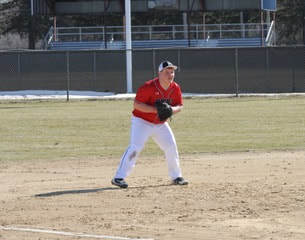






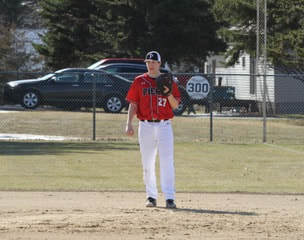



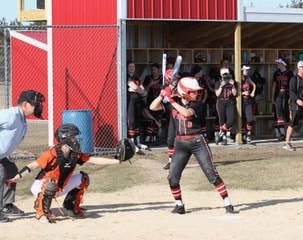
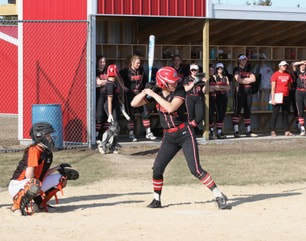


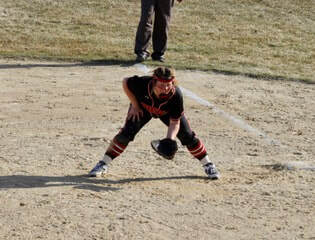

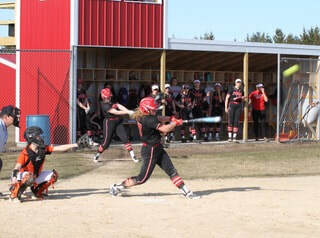

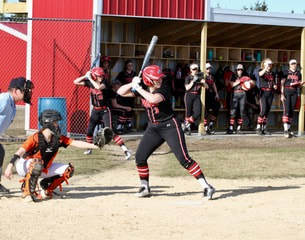







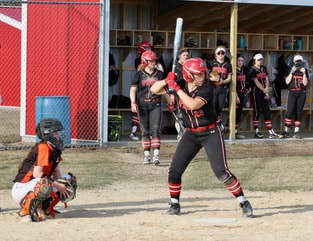




















Published on April 19, 2019 17:42
April 15, 2019
The Nor-Cal Rapist
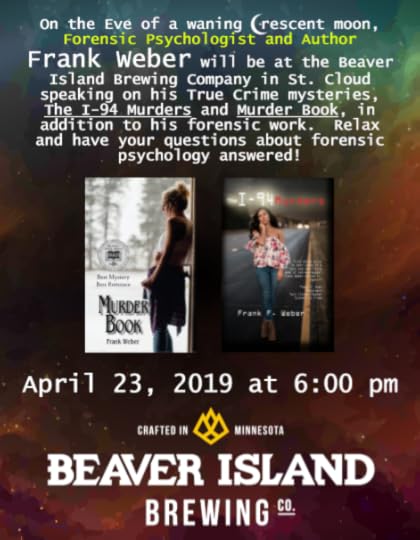 I can’t thank people enough for the success of
The I-94 Murders
. Success only comes with the support of others. I am looking forward to answering questions on forensics and writing True Crime at the Beaver Island Brewing Co. in St. Cloud on Tuesday, April 23 at 6:00 pm.
I can’t thank people enough for the success of
The I-94 Murders
. Success only comes with the support of others. I am looking forward to answering questions on forensics and writing True Crime at the Beaver Island Brewing Co. in St. Cloud on Tuesday, April 23 at 6:00 pm.Thank you Bob Hughes for the interview on KNSI on Friday, April 12. I may be back again on Friday April 19 at 8:05 am. 103.3 FM is a great classic rock station!
On April 19, Jim Maurice is interviewing me on WJON at 12:20 pm. on AM 1240.
On April 16, I have an interview with Clarissa Baker, reporter from St. Cloud Times. I will let people know when her article comes out.
I will be speaking on The I-94 Murders at the Ortonville and Graceville Public libraries on Saturday, April 27, 2019. We were snowed out last week so this is the new schedule:
Graceville Public Library at 10:30 a.m. located at 415 Studdart Ave, Graceville, MN. Ortonville Public Library at 2:00 p.m., located at 412 2nd St NW, Ortonville, MN
On May 7, 2019, I will be presenting on The I-94 Murders at the Lake Elmo library in Washington County located at 3537 Lake Elmo Avenue North, Lake Elmo, Minnesota.
 The
I-94
Murders hypothesis is used, again, to catch a serial rapist.
The
I-94
Murders hypothesis is used, again, to catch a serial rapist. While I’m not attempting to take any credit for the work of investigators, it is interesting that the solution I proposed to catch the killer in The I-94 Murders was used, 4 months after the book was sent to print, to catch the Golden State Killer. It was now used again to catch the Nor-Cal rapist. The Nor-Cal (northern California) rapist collected data on his victims for months before breaking into their homes. He raped women in 6 different California counties, including: Sacramento, Butte, Contra Costa, Solano, Sonoma and Yolo.
 A map released by the Sacramento Police Department traces the 10 assaults tied to the "Norcal rapist." 1991: Rohnert Park, 1st victim, age 21.
A map released by the Sacramento Police Department traces the 10 assaults tied to the "Norcal rapist." 1991: Rohnert Park, 1st victim, age 21. 1992: Vallejo, 3rd victim, age 30 2nd victim in Sonoma.
1996: Martinez, 4th victim, age 39.
1997: 6th assault involving 2 victims in Davis, both age 29 5th victim in Woodland.
2000: Davis, 8th victim, age 22
2006: Sacramento, 8th assault, involving his 9th and 10th reported victims, ages 24 and 28
The Nor-Cal rapist had been in his victims’ homes days before the rape. In one home he cut a hole in the sheetrock in the garage days earlier and covered it so he could reach in and unlock the door on the night of his attack.
In 1991, Nicole Earnest-Payte was raped in her home in Rohnert Park. She woke to a gun pressed against her head. She was tied up and raped over and over again throughout the night.
 In 1992, rapes occurred in Vallejo and Sonoma, California involving torture for hours on end. The rapist had stalked the victims as he knew he’d have hours with them uninterrupted. The process was the same. He tied the women up. He repeatedly raped them. He took their ATM cards and made them give up their PIN numbers. All 3 rapes revealed the same DNA. There was no match in the national DNA system (CODIS), indicating the rapist has never been convicted of a felony.
In 1992, rapes occurred in Vallejo and Sonoma, California involving torture for hours on end. The rapist had stalked the victims as he knew he’d have hours with them uninterrupted. The process was the same. He tied the women up. He repeatedly raped them. He took their ATM cards and made them give up their PIN numbers. All 3 rapes revealed the same DNA. There was no match in the national DNA system (CODIS), indicating the rapist has never been convicted of a felony. The rapes stopped until Halloween night of 1996. A woman answered the door, thinking it’s a late night trick or treater. A man in a skeleton mask and a black robe was at the door. He threw the woman down. He tied her up, and repeatedly raped her. He took her ATM card. He phoned the victim several weeks later at work to apologize to her. This attack, referred to as “the Martinez assault,” has DNA that matches the assaults from years earlier. All of the victims are of European ancestry up to this point.
 RAW: NorCal Rapist Victim Speaks in 2006 January 25, 1997 in Davis, California, a clear change has been made in the rapists victim pool. This is a man who stalked for months, rather than committing crimes of convenience. This time he broke into the home of 2 young Asian women who live together. He raped both women, and took an ATM card. Once again, he made her relinquish the PIN number. He is pictured wearing a clear Halloween mask at the ATM machine.
RAW: NorCal Rapist Victim Speaks in 2006 January 25, 1997 in Davis, California, a clear change has been made in the rapists victim pool. This is a man who stalked for months, rather than committing crimes of convenience. This time he broke into the home of 2 young Asian women who live together. He raped both women, and took an ATM card. Once again, he made her relinquish the PIN number. He is pictured wearing a clear Halloween mask at the ATM machine.In 1997, an Asian American psychology major at Chico State University in California had just broken up with her boyfriend. She’d come home and found things were out of place. Frustrated, she assumed her ex was coming into her apartment to torment her. Nothing was damaged- just moved about. Her ex adamantly denied this. Stressed, she went out to a club with friends. That night, she woke up to a man standing her over her with a gun. He tied her up with zip ties and ropes. The victim pretended she was holding a ball in her hand as her wrists were being tied, to give her some wriggle room to work her hands free. She kept pushing saliva against the duct tape on her mouth to loosen it. She finally breaks free and stabs him with scissors. She could have killed him, but couldn’t get herself to do it. He overpowered her and raped her again. He then stayed in her home for hours. After he left, she managed to work herself free again. This victim was able to offer a description, as she removed her blindfold. (Her ex-boyfriend had nothing to do with the break-ins.)
In 2000, Maki Anderson, an Asian college student, was living with friends in Davis, California. Her college friends had gone home for the weekend. She heard a noise in her home in the middle of the night and grabbed scissors. As she stepped around a corner, he attacked and overpowered her. She told him her roommates are coming back. He tied her up and threw her in her car and then drove around and parked, to repeatedly sexually assault her. Hours later, he returned her home, and asked if she needed to call someone. When he left, she eventually worked the tape free and ran to the police station, tape still hanging on her body.
Investigators continually check CODIS, but a match never comes up. The rapist is not in the national data base. There are no witnesses. There is no video tape. There is no progress in the investigation.
In 2006, 2 Young Asian women, ages 24 and 28, are living together in Sacramento, California. One showers, but when she steps out the rapist is waiting for her. He ties her up, throws her on a bed, and waits for her roommate to return. When the roommate steps into the garage, he attacks and binds her. He throws her in the same bed as the first woman. He then repeatedly rapes them next to each other, and then makes them both shower. He speaks to them about where they each work. The DNA on the bed matched the previous victims.
By 2006, there are more security systems on homes, so a home down the block catches a white Toyota Forerunner that has to belong to the rapist, by the process of elimination. The problem is with the large number of white Toyota Forerunners in California. The Nor-Cal rapist has raped in 6 different jurisdictions, so he’s covering a large area. One of the victims caught a glimpse of his face, and from the description they realize he has gained 30 pounds since 1997. Still, the investigation stalls.
A survivor agrees to do a press conference, which leads to thousands of new leads. They run over 120 new DNA tests on uncharged suspects—no matches. After 2006, there are no more rapes.
 And then The I-94 Murders hypothesis—use Ancestry.com to trace ancestry of the rapist. In California, the Golden State Killer is caught using this exact method. The Nor-Cal investigators saw the success in the Golden State Killer case and decide to repeat the same process. And sure enough, they find a relative of the Nor-Cal rapist in a genealogy program. They use Gedmatch, a free genealogy program which identifies relatives. They found someone who has the same grandparents as the rapist.
And then The I-94 Murders hypothesis—use Ancestry.com to trace ancestry of the rapist. In California, the Golden State Killer is caught using this exact method. The Nor-Cal investigators saw the success in the Golden State Killer case and decide to repeat the same process. And sure enough, they find a relative of the Nor-Cal rapist in a genealogy program. They use Gedmatch, a free genealogy program which identifies relatives. They found someone who has the same grandparents as the rapist. Roy Charles Waller, a Safety Engineer (machine safety) for 25 years at the University of Berkley, is identified among the relatives as a suspect. But they need his DNA. Once you set your garbage on the street it becomes public property, so they pick up his garbage and find his DNA on a straw, match it, and arrest him. While relatives say there is no way you could suspect him, it’s interesting to note that 2 females who worked in his office said they purposely avoided walking by his office on campus because of the way he looked at women.
 Rape suspect Roy Charles Waller, right, talks to attorney Joseph S. Forina as he makes his first appearance, Monday, Sept. 24, 2018, in Sacramento Superior Court. By SAM STANTON, SACRAMENTO BEE and DARRELL SMITH | Sacramento Bee Roy Waller was placed in a caged cell in the courtroom while the charges were brought forth, which was empowering to the victims. On March 7, 2109, Roy Waller pled not guilty.
Rape suspect Roy Charles Waller, right, talks to attorney Joseph S. Forina as he makes his first appearance, Monday, Sept. 24, 2018, in Sacramento Superior Court. By SAM STANTON, SACRAMENTO BEE and DARRELL SMITH | Sacramento Bee Roy Waller was placed in a caged cell in the courtroom while the charges were brought forth, which was empowering to the victims. On March 7, 2109, Roy Waller pled not guilty.  Nicole Ernest Payte, his 1st recorded victim, stated if she had a chance to address the man who attacked her, she would say, "You didn’t ruin me. He's pathetic to me. I’m not afraid of him. I would tell him what he did, what he’s done to my life. The terror he caused me that night. It was terror. I didn’t think I’d make it out alive.” Payte, who is now a married mother, reports she has a "wonderful life" and that "He has not destroyed my life."
Nicole Ernest Payte, his 1st recorded victim, stated if she had a chance to address the man who attacked her, she would say, "You didn’t ruin me. He's pathetic to me. I’m not afraid of him. I would tell him what he did, what he’s done to my life. The terror he caused me that night. It was terror. I didn’t think I’d make it out alive.” Payte, who is now a married mother, reports she has a "wonderful life" and that "He has not destroyed my life."My praise goes out to the brave women who survived and my prayers to all the victims, known and unknown, in their recovery. I am thankful that advances in science are being used to make our world safer.
Thanks for listening,
Frank

 Preston and Olivia & Brenda and Frank checking out Andrew Zimmer’s new restaurant, The Lucky Cricket, in St. Louis Park.
Preston and Olivia & Brenda and Frank checking out Andrew Zimmer’s new restaurant, The Lucky Cricket, in St. Louis Park. 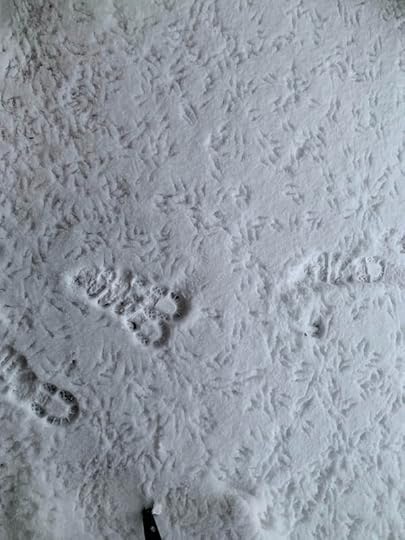 Bird tracks on the front porch.
Bird tracks on the front porch.
Published on April 15, 2019 05:39



